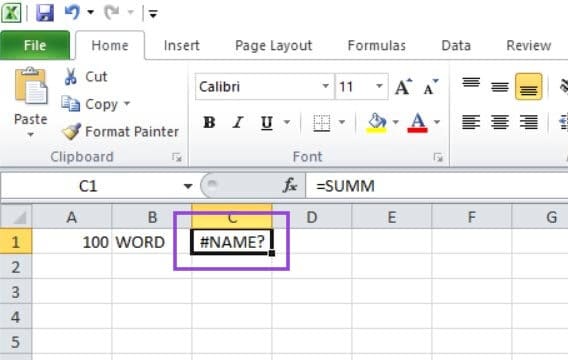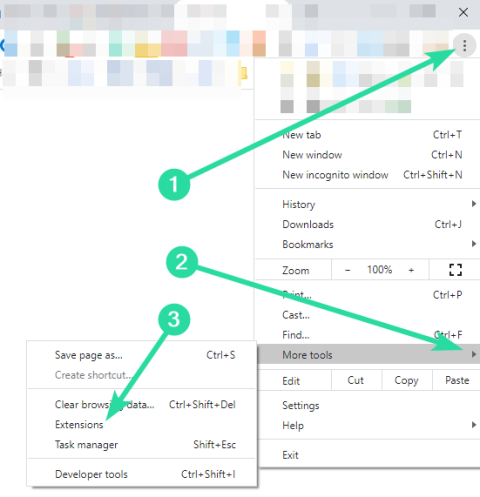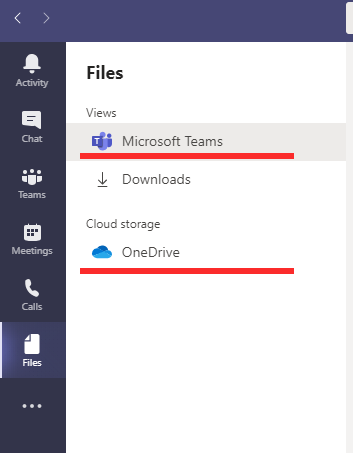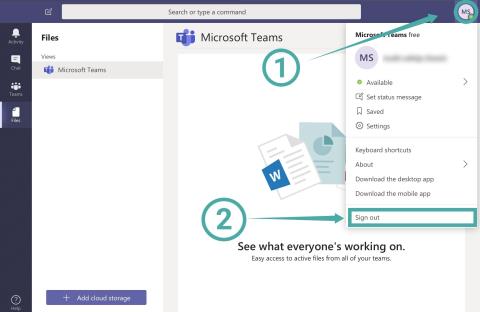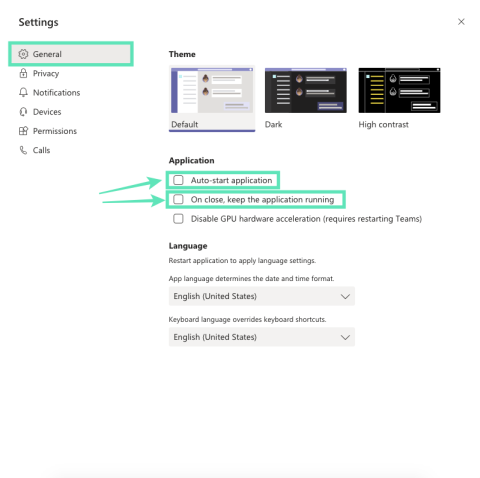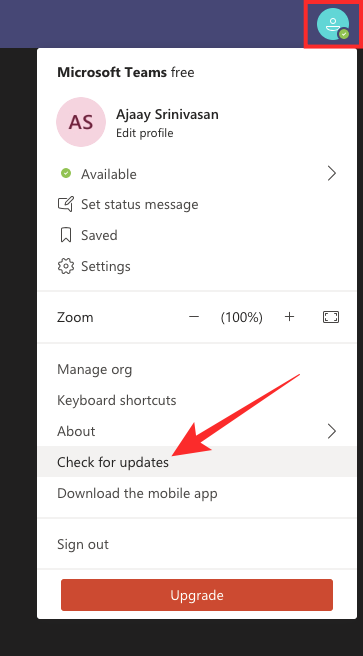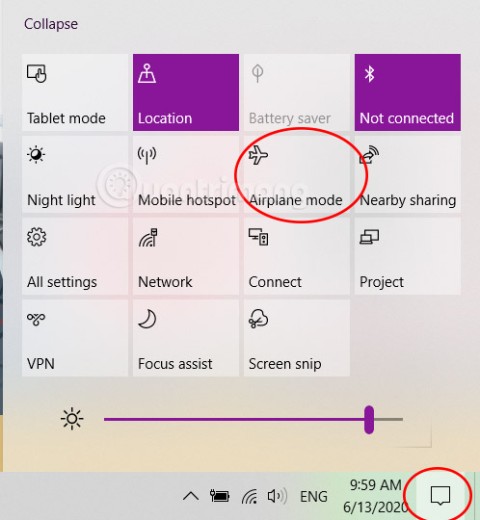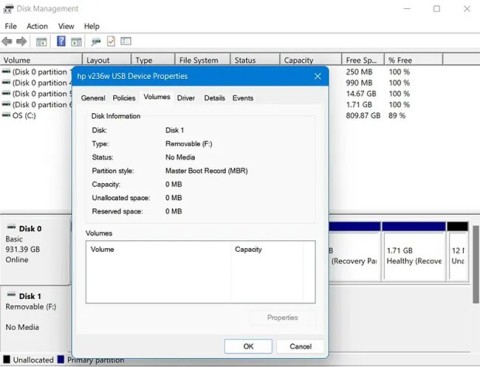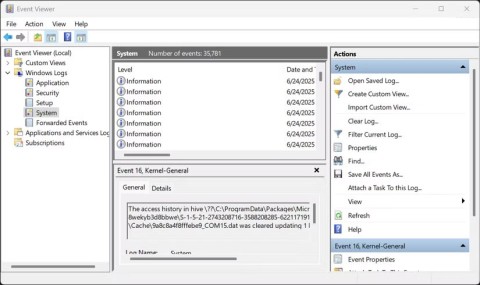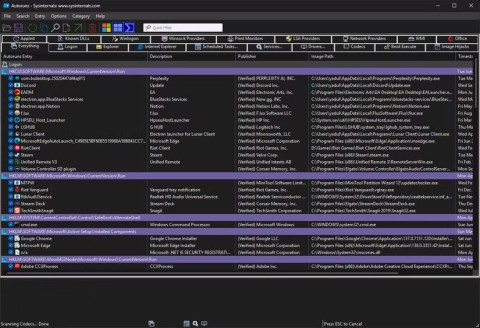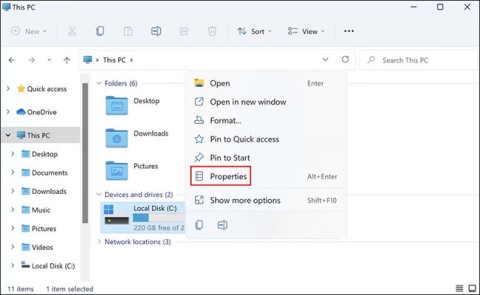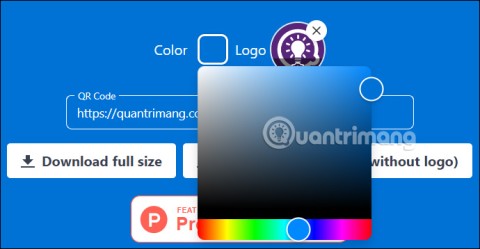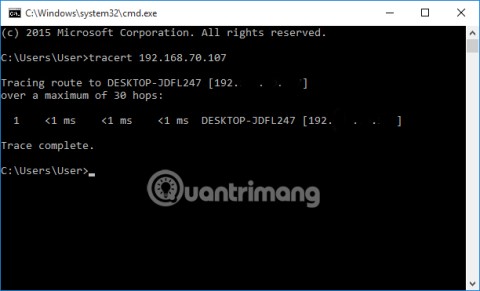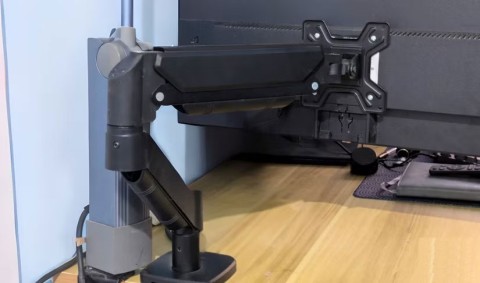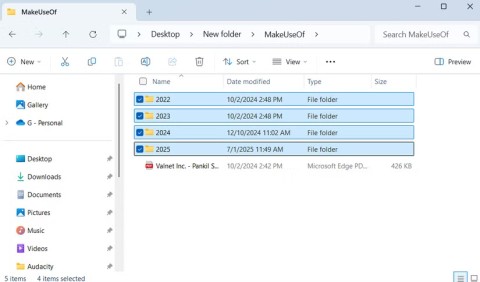Melna Mīts: Wukong Kļūdas – Mēģināmas Labojumus
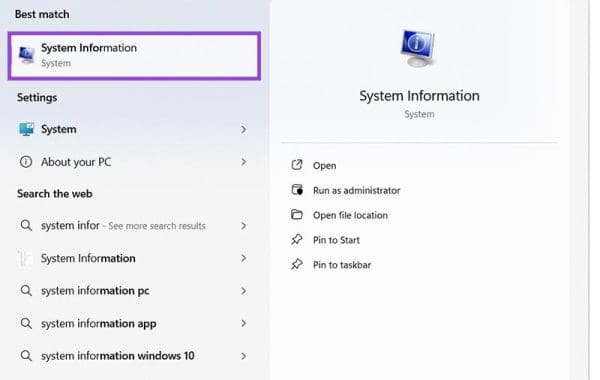
Uzziniet, kā tikt galā ar Melna Mīts: Wukong kļūdām, lai jūs varētu baudīt šo aizraujošo darbības RPG bez pārtraukumiem.
Jau gadiem ilgi sistēma Windows ir reklamējusi savus jaunos līdzekļus un uzlabojumus, apgalvojot, ka tie ir tikai viena klikšķa attālumā no izvēlnes Sākt. Bet ko darīt, ja izvēlne Sākt jums vairs neatveras? Var gadīties, ka operētājsistēmas Windows 11 izvēlne Sākt pēkšņi pārstāja darboties, tādējādi padarot parasto uzdevumu veikšanu nedaudz apgrūtinošu.
Ja operētājsistēmā Windows 11 netiek atvērta izvēlne Sākt, ir pieejams tik daudz labojumu, cik mēs varam iedomāties, lai palīdzētu atrisināt problēmu .
Saistīts: Kā atinstalēt lietojumprogrammas operētājsistēmā Windows 11
PIEZĪME. Ja tālāk norādītie 17(!) regulārie labojumi jums neizdodas, izmēģiniet 18. labojumu, kas norādīts tālāk sadaļā "Pēdējie risinājumi", kurā ir runāts par jauna lietotāja izveidi, izmantojot komandrindu . Tas palīdz izveidot jaunu lietotāju, izmantojot CMD, tādējādi nepiekļūstot lietotnei Iestatījumi vai izvēlnei Sākt, kas var nedarboties. Tomēr 1. labojums par problēmu, ko izraisa Windows atjaunināšana KB5004300, ir jauns papildinājums, tāpēc, iespējams, vispirms pārbaudiet šo.
Saturs
Mēs esam iekļāvuši kopumā 20 (!) labojumus, lai atrisinātu problēmu ar izvēlni Sākt operētājsistēmā Windows 11. 3 no tiem ir vispārīgi labojumi, kurus vajadzētu izmēģināt tikai pēc tam, kad esat pārliecināts, ka 17 primārie labojumi nepalīdz.
17 galvenie labojumi
Vispirms izmēģiniet šos labojumus, pirms izmēģināt 3 vispārīgos labojumus (arī norādīti tālāk).
1. labojums: atinstalējiet un atkārtoti instalējiet Windows atjauninājumu KB5004300
Šķiet, ka nesenais labojums, ko atklājuši ērgļa acu lietotāji, viegli izlabo sākuma izvēlni jaunajiem Windows 11 jauninājumiem. Šķiet, ka šo problēmu rada Windows atjauninājums, kas izlaists ar nosaukumu KB5004300. Atinstalējot un atkārtoti instalējot to savā datorā, tiks novērsta izvēlne Sākt un uzdevumjosla. Izpildiet tālāk sniegtos norādījumus, lai sāktu darbu.
Nospiediet Windows + itastatūru, lai atvērtu lietotni Iestatījumi. Kreisajā pusē noklikšķiniet uz "Windows atjaunināšana".
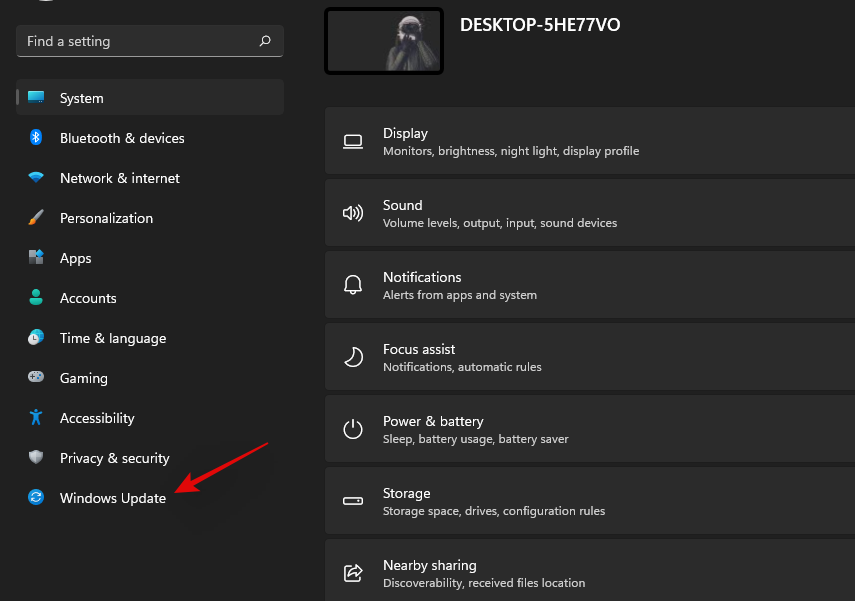
Tagad noklikšķiniet uz "Atjaunināt vēsturi".

Noklikšķiniet uz "Atinstalēt atjauninājumus".
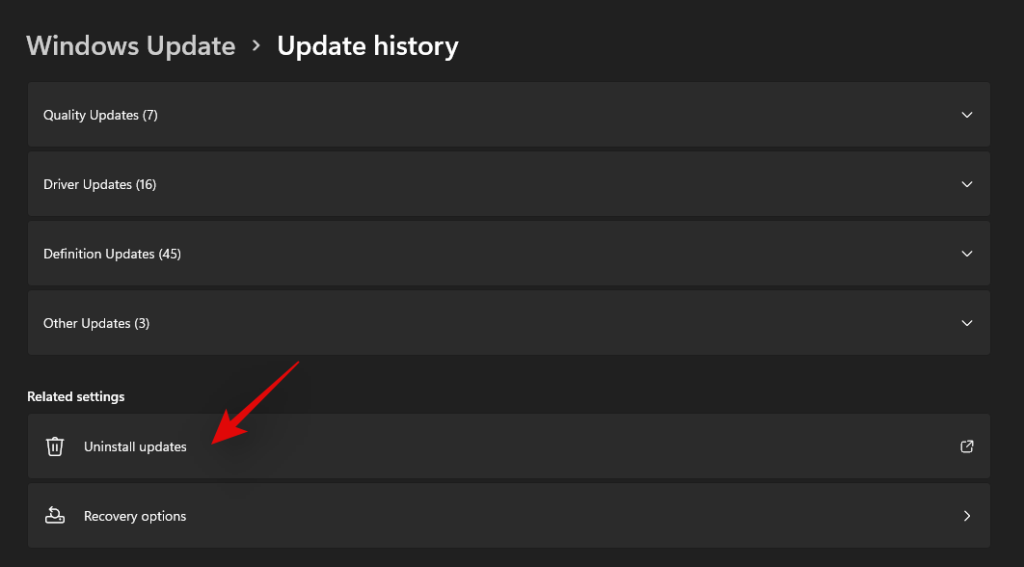
Tagad jūs tiksit novirzīts uz vadības centru. Sarakstā atrodiet attiecīgo KB5004300 atjauninājumu, noklikšķiniet un atlasiet to.
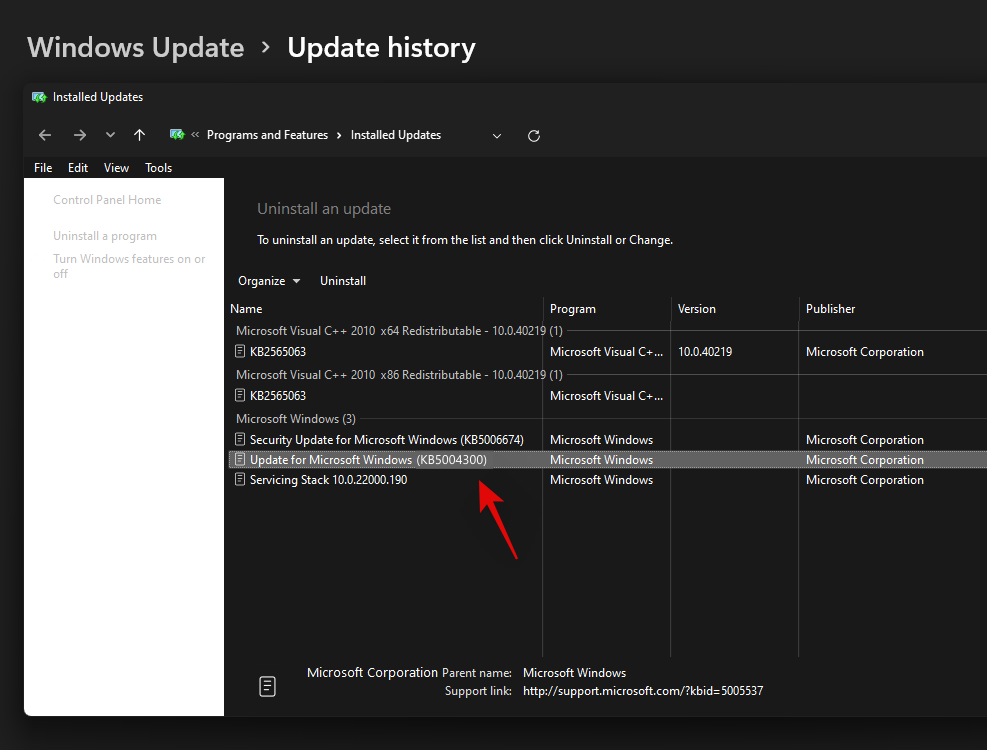
Tagad augšpusē noklikšķiniet uz "Atinstalēt".
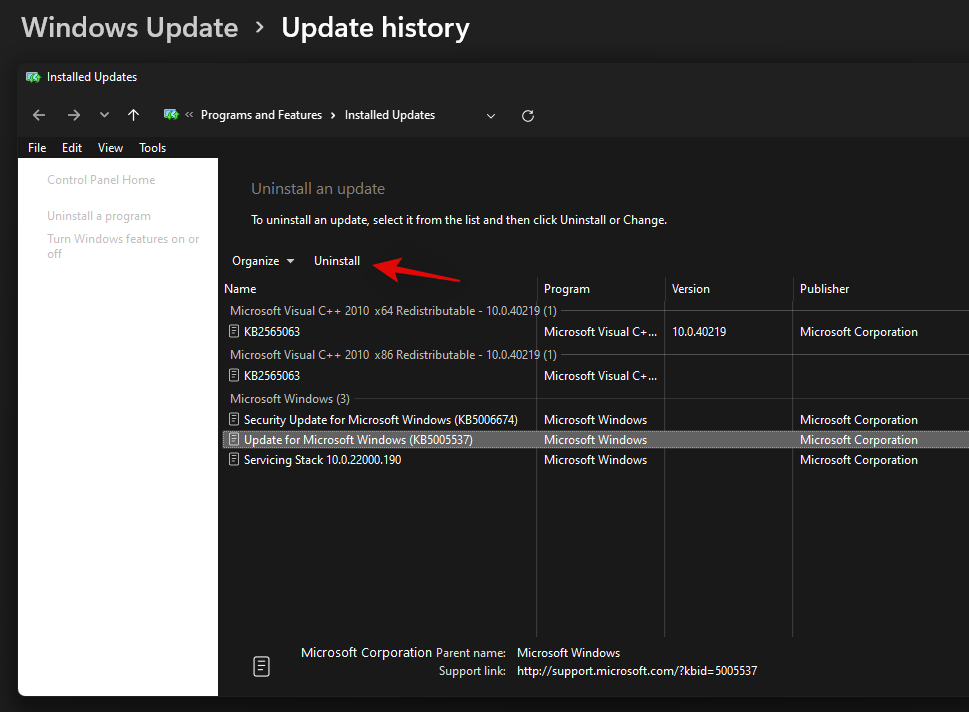
Izpildiet ekrānā redzamos norādījumus, lai noņemtu atjauninājumu no datora. Kad tas ir atjaunināts, restartējiet datoru.
Tagad nospiediet Windows + ivēlreiz, kad dators tiek restartēts, un vēlreiz atlasiet Windows Update.

Pārbaudiet, vai nav atjauninājumu, un tagad jums vajadzētu būt iespējai atkal instalēt Windows Update KB 5004300 savā datorā.
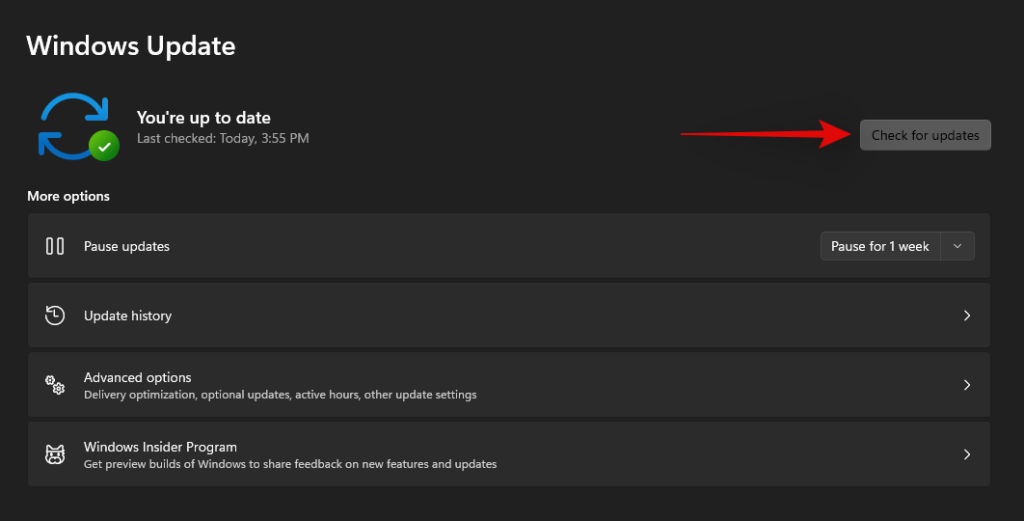
Lejupielādējiet un instalējiet atjauninājumu, un uzdevumjoslas un izvēlnes Sākt funkcionalitāte tagad ir jāatjauno sistēmā Windows 11.
2. labojums: piespiedu kārtā restartējiet pakalpojumu Iris
Nesen veiktais Microsoft iekšējās informācijas atjauninājums daudziem lietotājiem ir radījis nopietnas problēmas ar uzdevumjoslu un izvēlni Sākt. Ja arī jūs esat abonējis Insider kanālu un esat saskāries ar problēmām, veicot atjaunināšanu uz būvējuma numuru 22449 vai jaunāku, varat izmantot tālāk minēto labojumu.
Šī metode izdzēsīs pakalpojuma Iris reģistra vērtību, kurai pēc restartēšanas tas būs jāpiespiež atkārtoti instalēt. Šķiet, ka atkārtota instalēšana palīdz atrisināt šo problēmu lielākajai daļai lietotāju. Pat ja jūs neizmantojat tās pašas versijas, šis labojums ir vērts izmēģināt. Izpildiet tālāk sniegtos norādījumus, lai sāktu darbu.
Piezīme. Šī komanda nekavējoties restartēs datoru. Ja fonā notiek kāds darbs, pirms turpināt darbu ar šo rokasgrāmatu, noteikti to saglabājiet.
Nospiediet Windows + S tastatūru un meklējiet CMD. Noklikšķiniet uz Palaist kā administratoram vai nospiediet Ctrl + Shift + Enter tastatūras taustiņu.
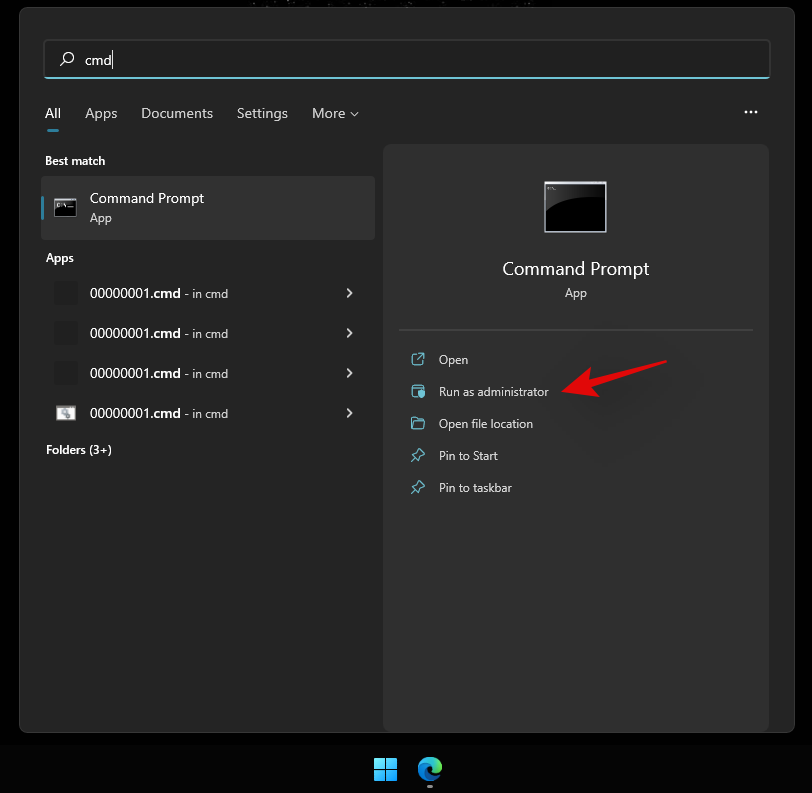
Ievadiet šo komandu un nospiediet tastatūras taustiņu Enter.
reg delete HKCU\SOFTWARE\Microsoft\Windows\CurrentVersion\IrisService /f && shutdown -r -t 0

Jūsu dators tagad tiks restartēts. Piesakieties savā datorā kā parasti, un tagad jūsu sistēmā ir jāatjauno izvēlnes Sākt funkcionalitāte.
3. labojums: restartējiet datoru
Šī ir visvienkāršākā metode, kas nāk prātā, mēģinot novērst lielāko daļu problēmu operētājsistēmā Windows 11. Parasti, restartējot sistēmu, jūs būtībā piespiežat visus procesus, tostarp Windows, restartēt visus to pakalpojumus un procesus. Tādējādi tiek restartēts arī izvēlnes Sākt process, kas palīdzēs novērst ar to saistīto problēmu.
Ja tas nav acīmredzams, veiciet tālāk norādītās darbības, lai restartētu datoru.
Pārliecinieties, vai visas jūsu lietotnes un faili ir aizvērti. Vai arī vienkārši atveriet darbvirsmas ekrānu, vienlaikus nospiežot Windows key + D . Tagad nospiediet Alt + F4 tastatūras taustiņus kopā, lai atvērtu ekrānu “Shut Down Windows”.

Noklikšķiniet uz nolaižamās izvēlnes, atlasiet Restartēt un nospiediet pogu Labi.
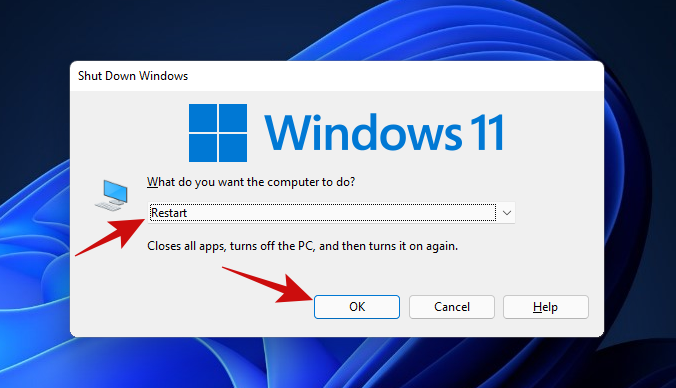
Kad dators ir restartēts, jums vajadzētu būt iespējai atkal izmantot izvēlni Sākt. Ja joprojām nevarat, izmēģiniet nākamo metodi.
4. labojums: restartējiet programmu Windows Explorer, izmantojot uzdevumu pārvaldnieku
Nākamais vienkāršais labojums iesaldētai izvēlnei Sākt izmanto uzdevumu pārvaldnieku. Uzdevumu pārvaldnieks var būt ideāls rīks, lai pārvaldītu jebkuru darbību Windows datorā.
Ja jums ir izvēlne Sākt, kas nevēlas reaģēt uz jūsu klikšķiem, veiciet tālāk minētās darbības, lai redzētu, vai tā novērš jūsu problēmu.
Nospiediet Ctrl + Shift + Esc taustiņus, lai aktivizētu uzdevumu pārvaldnieku. Ja jūsu uzdevumu pārvaldnieks izskatās šādi, noklikšķiniet uz pogas "Papildinformācija", lai piekļūtu detalizētam skatam.
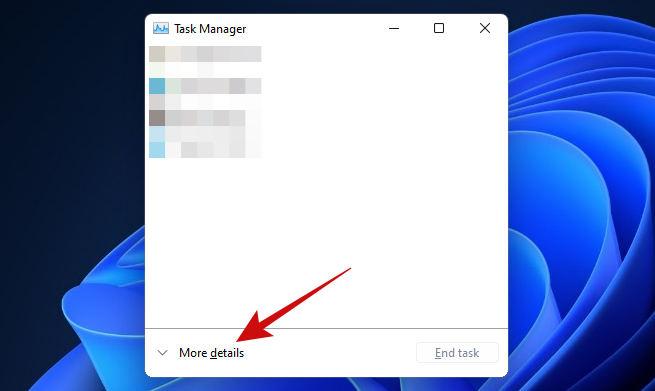
Kad esat nokļuvis uzdevumu pārvaldniekā, ritiniet sarakstu Procesi, lai atrastu procesu “Windows Explorer”. Ar peles labo pogu noklikšķiniet uz procesa un noklikšķiniet uz opcijas "Restartēt".
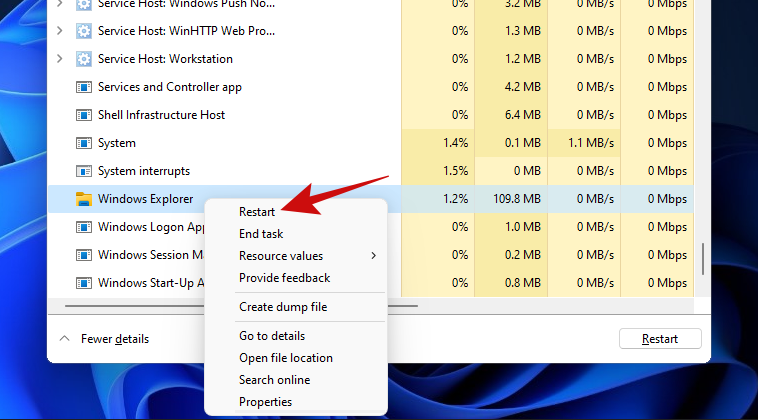
Pēc noklikšķināšanas operētājsistēmai Windows ir nekavējoties jārestartē Windows Explorer process, un tam vajadzētu novērst sākuma izvēlni.
Windows Explorer restartēšana ir diezgan līdzīga datora restartēšanai. Vienīgā atšķirība ir tā, ka šeit jūs restartējat tikai vienu procesu, savukārt, restartējot, jūs restartējat visus procesus. Turklāt daudzi cilvēki pagātnē ir guvuši panākumus, labojot izvēlni Sākt ar šo metodi, tāpēc ir vērts to izmēģināt.
5. labojums: pārbaudiet, vai nav Windows atjauninājumu
Ja joprojām nevarat atvērt izvēlni Sākt, izmēģiniet Windows Update. Problēma var būt izplatītāka, nekā jūs domājat, un korporācija Microsoft, iespējams, ir izlaidusi labojumfailu, lai izlabotu nereaģējošo izvēlni Sākt.
Lūk, kā to izdarīt.
Atveriet lietotni Iestatījumi ar Win key + i taustiņiem kopā. Kad tas ir atvērts, noklikšķiniet uz opcijas "Windows atjaunināšana".
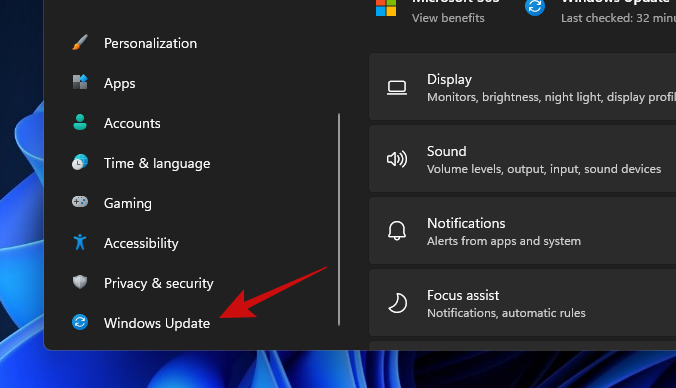
Noklikšķiniet uz lielās pogas Pārbaudīt atjauninājumus, lai sāktu pārbaudīt, vai jūsu datoram nav pieejami Windows atjauninājumi. Ja iespējams, ļaujiet Windows instalēt visus atjauninājumus.
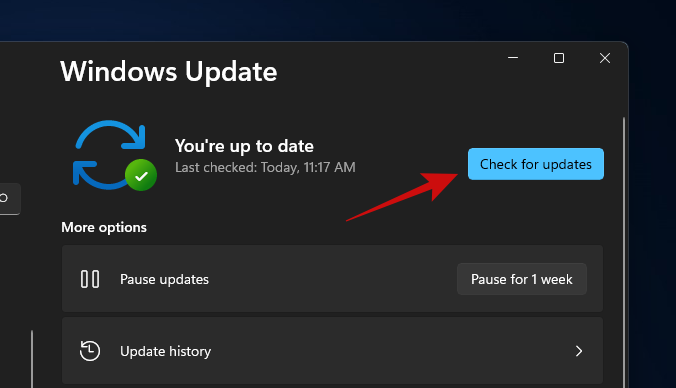
Kad Windows ir pabeidzis datora atjaunināšanu, vienkārši restartējiet to un mēģiniet atvērt izvēlni Sākt. Ja joprojām nevarat atvērt izvēlni Sākt, mēs domājam, ka ir pienācis laiks veikt sarežģītākus labojumus.
6. labojums: palaidiet DISM un SFC
DISM (izvietošanas attēla apkalpošana un pārvaldība) un SFC (sistēmas failu pārbaudītājs) ir divi no spēcīgākajiem rīkiem bojātu Windows instalāciju identificēšanai un labošanai. Šos rīkus var izmantot ar komandu uzvedni vai Windows PowerShell. Šajā rokasgrāmatā mēs tos izmantosim kopā ar komandu uzvedni.
Sāksim ar DISM. DISM var izmantot, lai iegūtu jaunas bojātu Windows failu kopijas.
Nospiediet, Win key + r lai atvērtu lodziņu Palaist, ierakstiet cmd un pēc tam nospiediet Ctrl + Shift + Enter kopā (nevis nospiežot enter), lai atvērtu paaugstinātu komandu uzvedni.
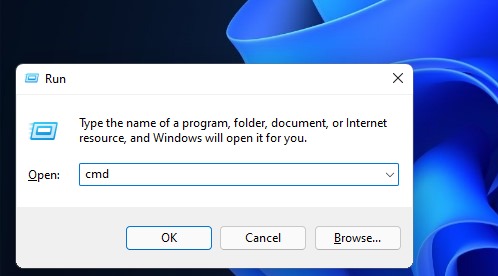
Kad esat komandu uzvednē, ielīmējiet tālāk norādīto kodu un nospiediet taustiņu Enter.
DISM /Online /Cleanup-Image /RestoreHealth
DISM tagad mēģinās atjaunot bojātos failus (ja tādi ir) no pašreizējās instalācijas, pieprasot jaunu šī faila kopiju no Windows atjauninājuma. Viss process aizņems aptuveni 15-20 minūtes. Lūk, kā komanda izskatās darbībā.
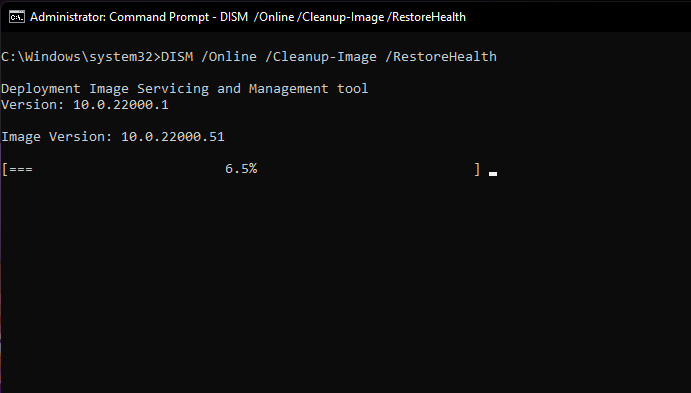
Kad komanda ir atjaunojusi visus bojātos failus, jums vajadzētu redzēt kaut ko līdzīgu šim.
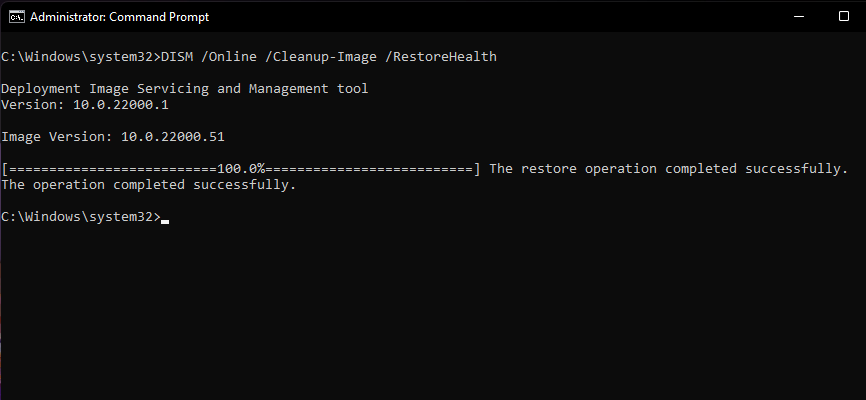
Kad esat pabeidzis šo darbību, atstājiet komandu uzvednes logu atvērtu, lai palaistu nākamo komandu.
Nākamais solis ir pārbaudīt visu Windows 11 failu integritāti, lai pārliecinātos, ka tie ir labā stāvoklī. Šim nolūkam mēs izmantosim SFC rīku.
Lūk, kā.
Komandu uzvednes logā ielīmējiet tālāk norādīto kodu un nospiediet taustiņu Enter.
sfc /scannow
Lūk, kā izskatās komanda.
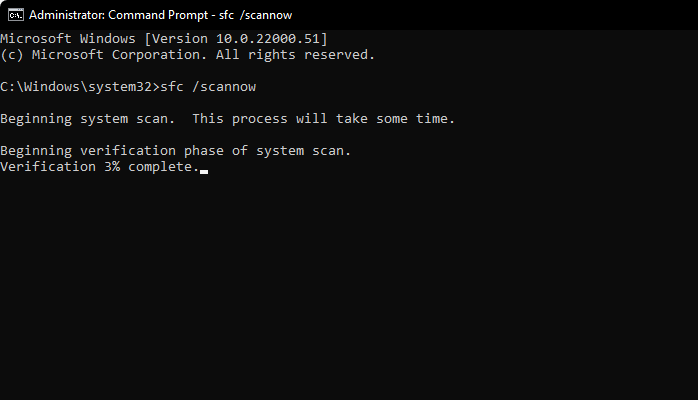
Iepriekš minētā komanda prasīs tikai dažas minūtes, lai pabeigtu Windows failu integritātes skenēšanu. Kad tas ir izdarīts, rezultātam vajadzētu izskatīties šādi.
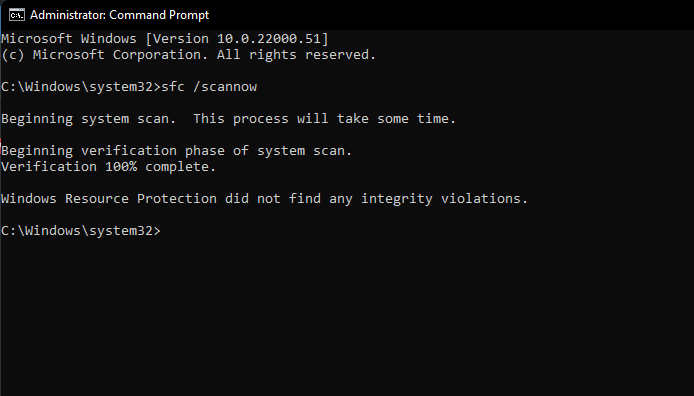
Padoms. Lai šī metode darbotos, pārliecinieties, vai jūsu datoram ir stabils interneta savienojums.
Tagad ir pienācis laiks pārstartēt.
Joprojām ir iestrēdzis ar bojātu izvēlni Sākt, ir pienācis laiks izmēģināt nākamo metodi.
Saistīts: 6 veidi, kā atjaunināt draiverus operētājsistēmā Windows 11
7. labojums: atjaunojiet meklēšanas indeksu
Izvēlne Sākt un Windows meklēšana ir cieši integrētas. Problēmas ar meklēšanu un indeksēšanu, iespējams, ir iekļuvušas izvēlnē Sākt un to ietekmējušas. Tātad, izslēgsim arī šo iespēju.
Apskatīsim darbības, kā to izdarīt.
Atveriet lodziņu Palaist, nospiežot Win key + r. Pēc tam lodziņā Palaist ielīmējiet zemāk esošo tekstu un nospiediet taustiņu Enter.
control /name Microsoft.IndexingOptions
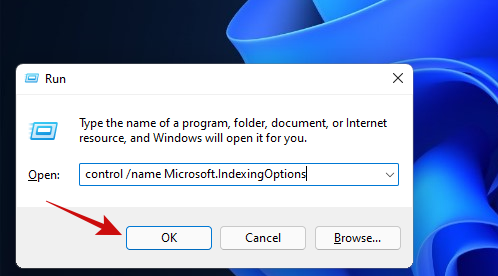
Jums vajadzētu redzēt uznirstošo logu ar nosaukumu "Indeksēšanas opcijas". Noklikšķiniet uz pogas 'Modificēt'.

Noklikšķiniet uz pogas Rādīt visas atrašanās vietas.
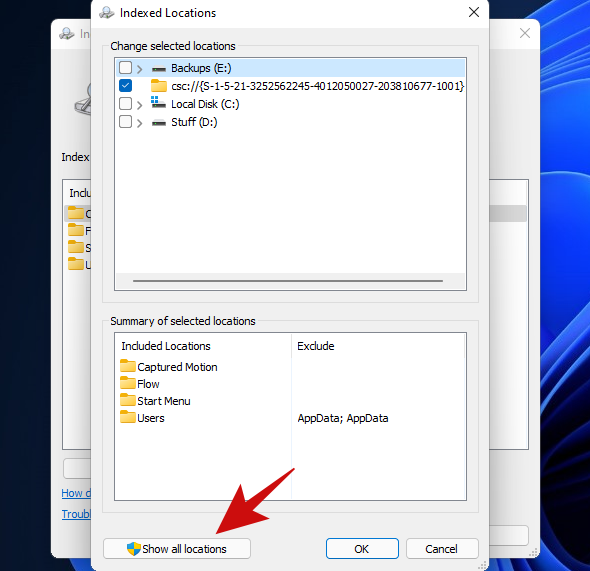
Šajā ekrānā noņemiet atzīmi no visām atrašanās vietām un noklikšķiniet uz pogas Labi. Mūsu vietā bija atzīmēta tikai viena vieta, tāpēc mēs noņēmām atzīmi tikai no vienas vietas šajā sarakstā.
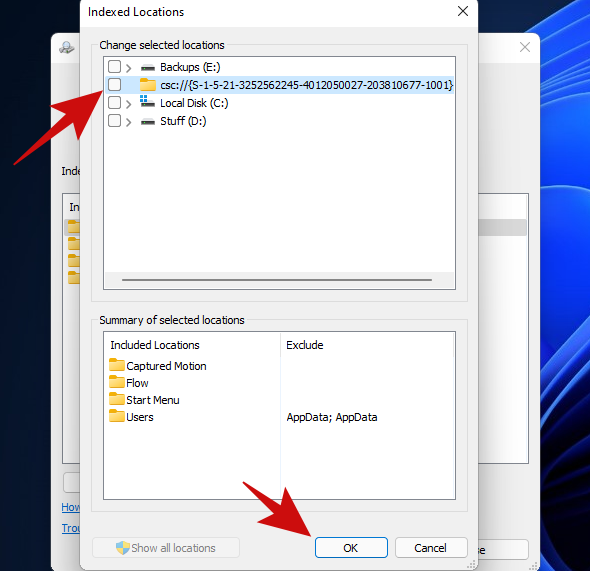
Noklikšķiniet uz pogas 'Papildu'.
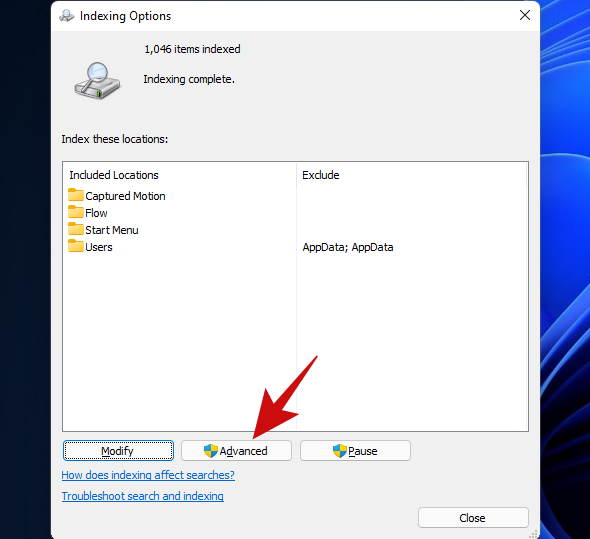
Noklikšķiniet uz pogas Pārbūvēt.
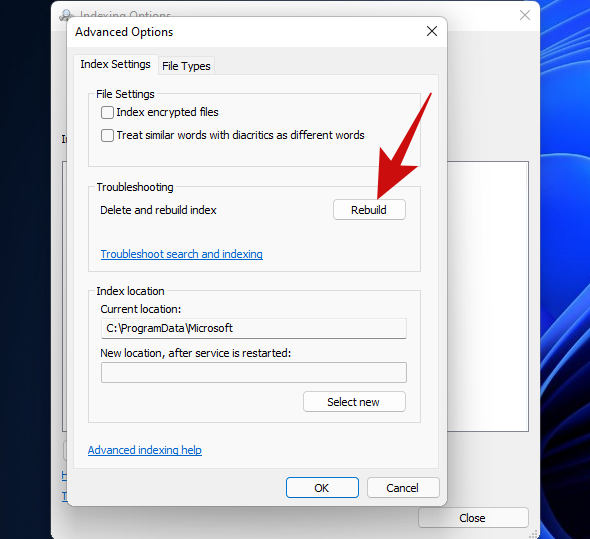
Windows tagad sāks atjaunot meklēšanas indeksu. Varat būt drošs, ka visu procesu tagad apstrādās sistēma Windows, un tam nav nepieciešama nekāda lietotāja ievade, lai gan tas aizņem diezgan daudz laika.
Kad sistēma Windows ir atjaunojusi jūsu meklēšanas indeksu, restartējiet datoru. Kad atkal atrodaties sistēmā Windows, mēģiniet atvērt izvēlni Sākt. Ja tas joprojām nedarbojas, mēs uzskatām, ka ir pienācis laiks izvēlēties izturīgāku metodi.
Ja esat instalējis kādas trešās puses programmas, lai mainītu sākuma izvēlnes izskatu vai funkcijas, mēs iesakām visas šādas programmas noņemt. Iespējams, viena no šīm programmām nav saderīga ar jauno Windows 11 sākuma izvēlni, tāpēc jums ir problēmas ar sistēmu. Ja jums ir kāda no tālāk minētajām lietotnēm, ieteicams pēc iespējas ātrāk atjaunot to iestatījumus un atinstalēt tās. Lielākā daļa šo lietotņu tika izstrādātas operētājsistēmai Windows 10 un zināmā mērā nav saderīgas ar Windows 11 izvēlnes Sākt kodu. Nesenais Windows 11 atjauninājums, iespējams, pārtrauca to saderību, izraisot sākuma izvēlnes traucējumus jūsu sistēmā.
Un vēl. Ja trešās puses lietotnes noņemšana, kas maina sākuma izvēlni, palīdz atjaunot tās funkcionalitāti, varat gaidīt saderīgu atjauninājumu, lai lietotni atkal izmantotu.
Vai izmantojāt reģistra uzlaušanu, lai iegūtu vecāku Windows 10 sākuma izvēlni operētājsistēmā Windows 11? Ja tā, tad, visticamāk, šī reģistra uzlaušanas funkcionalitāte pārtrūka ar neseno Windows 11 atjauninājumu. Šādos gadījumos varat izmantot tālāk sniegto ceļvedi, lai atsauktu izmaiņas savā sistēmā.
Nospiediet Windows + R uz tastatūras un dialoglodziņā Palaist ierakstiet tālāk norādīto.
regedit

Kad esat pabeidzis, nospiediet tastatūras taustiņu Enter, lai palaistu reģistra redaktoru. Tā vietā varat arī noklikšķināt uz "Labi".
Tagad kopējiet un ielīmējiet tālāk norādīto adresi adreses joslā reģistra redaktora augšpusē un nospiediet tastatūras taustiņu Enter.
Computer\HKEY_CURRENT_USER\Software\Microsoft\Windows\CurrentVersion\Explorer\Advanced
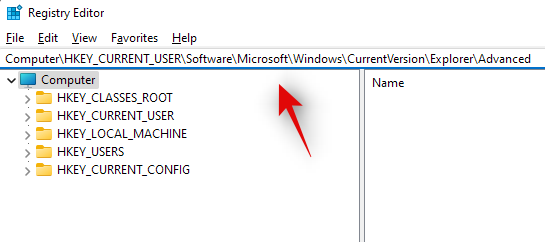
Look for ‘Show_StartClassicMode’ on your right and right-click on it.

Select ‘Modify’.

Change its value data to ‘0’ and click on ‘Ok’. Do not close the registry editor just yet.
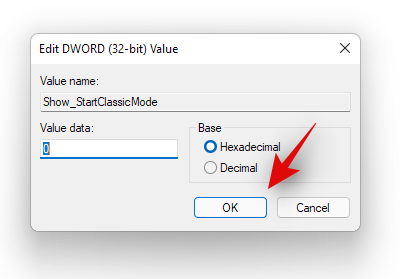
Press Ctrl + Shift + Esc on your keyboard to launch the Task Manager. Now click and switch to the ‘Details’ tab at the top.

Click and select Explorrer.exe from the list and press Delete on your keyboard.

Confirm your choice by clicking on ‘End Process’.

Now click on ‘File’ in the top left corner and select ‘Run new task’.
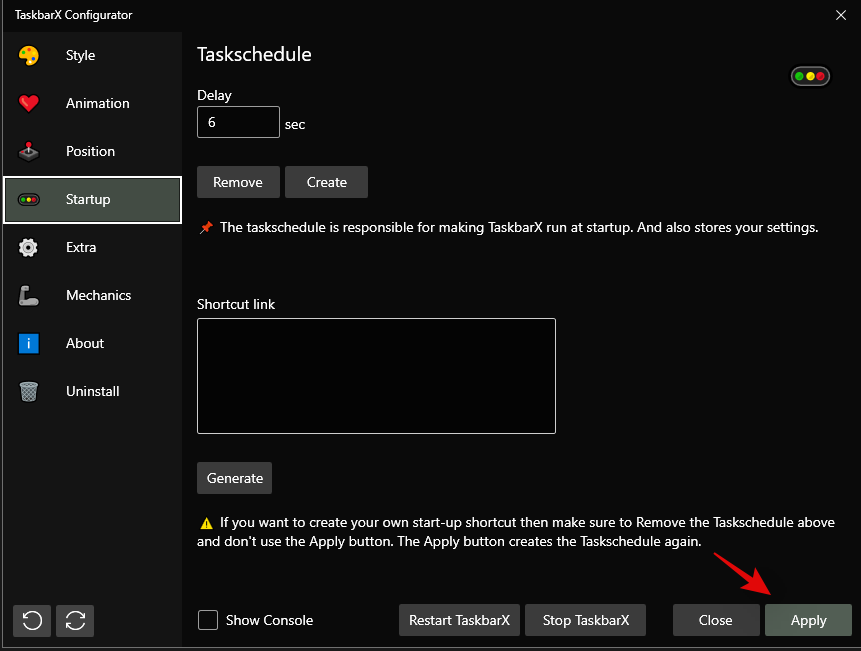
Type in ‘Explorer.exe’ and press Enter on your keyboard. You can also click on ‘Ok’ instead.
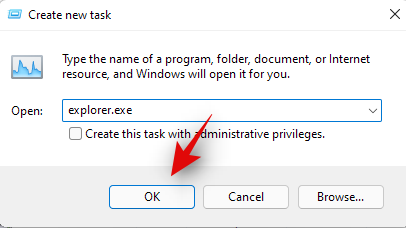
Explorer will now be restarted on your system. Switch back to the registry editor and click and select ‘Start_ShowClassicMode’.
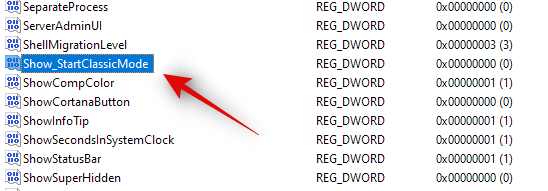
Press Delete on your keyboard and confirm your choice to delete the registry value.

Restart your system for good measure now.
If your Start menu wasn’t working due to a registry hack to get the older start menu then it should be fixed by now. You can check for the same by clicking on the Start menu icon in your taskbar.
Windows 11 has come a long way when compared to its predecessors. Background processes, tasks, and apps are more streamlined now and various features and elements seem to have their own dedicated packages. These dedicated packages make it easier for you to troubleshoot problems with certain features of Windows and even reinstall them in worst-case scenarios. If the start menu is still not working for you then you can reinstall basic elements of Windows 11 which will also reinstall the Start menu module on your system. This should help fix any background conflicts and get the Start menu back up and running on your system. Follow the guide below to get you started.
Press Windows + S on your keyboard and search for PowerShell. Click on ‘Run as administrator’ once the app shows up in your search results.
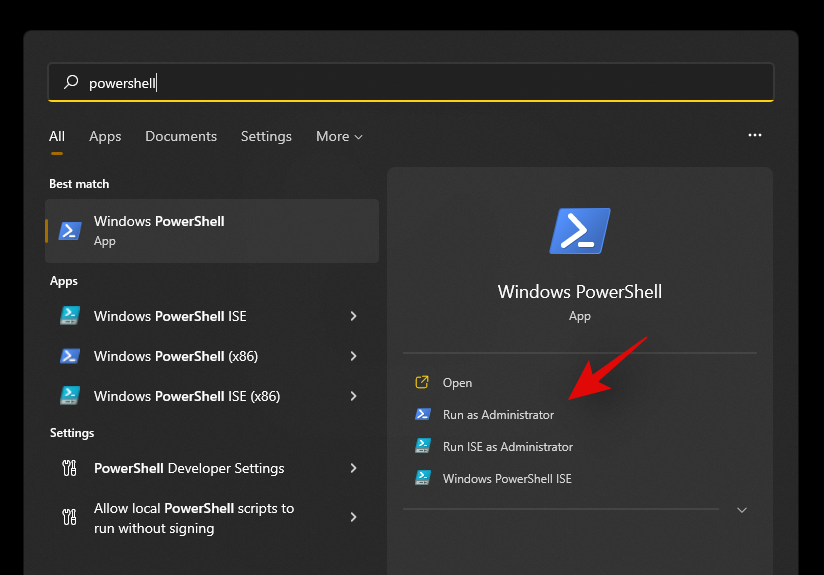
Now type in the following command and press ‘Enter’ on your keyboard.
Get-appxpackage -all *shellexperience* -packagetype bundle |% {add-appxpackage -register -disabledevelopmentmode ($_.installlocation + “\appxmetadata\appxbundlemanifest.xml”)}

Ignore any warnings that you get and continue with the process. Once complete, restart your system for good measure.
Now that the Start menu and other basic features have been reinstalled on your system, let’s rebuild your system’s index to get everything back up and running again. Press Windows + R on your keyboard to open the Run dialog box.
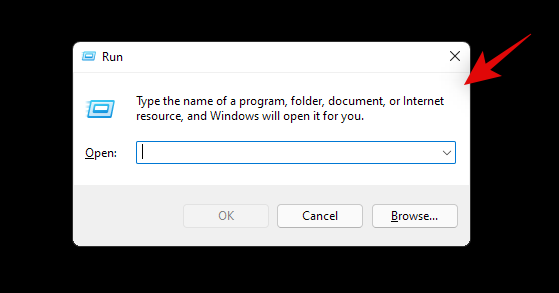
Type in the following command and press Enter on your keyboard.
control /name Microsoft.IndexingOptions
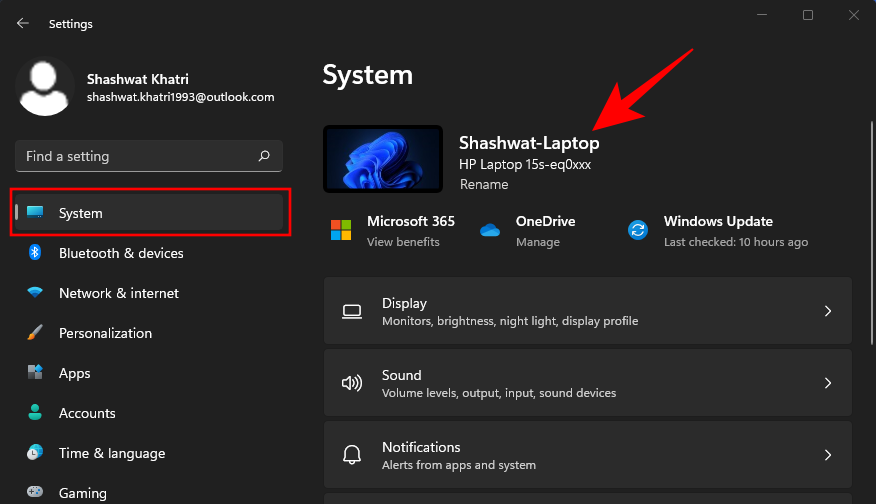
Click on ‘Modify’ and select ‘Show all locations’.
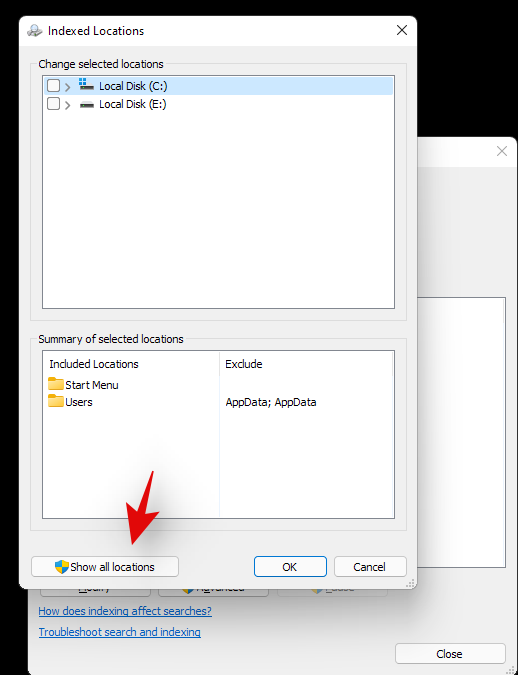
Uncheck all the boxes in the current list.
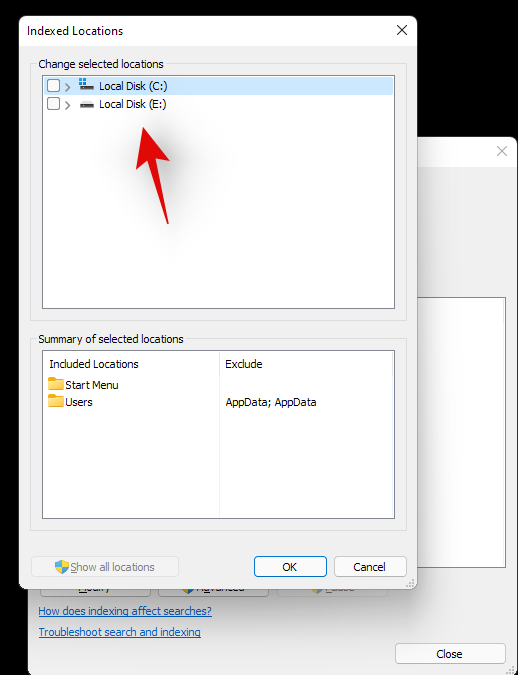
Click on ‘Ok’.
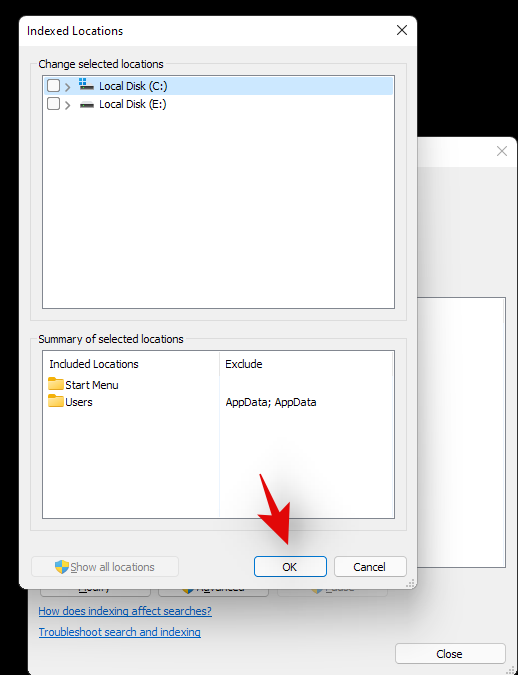
Click on ‘Advanced’ now.
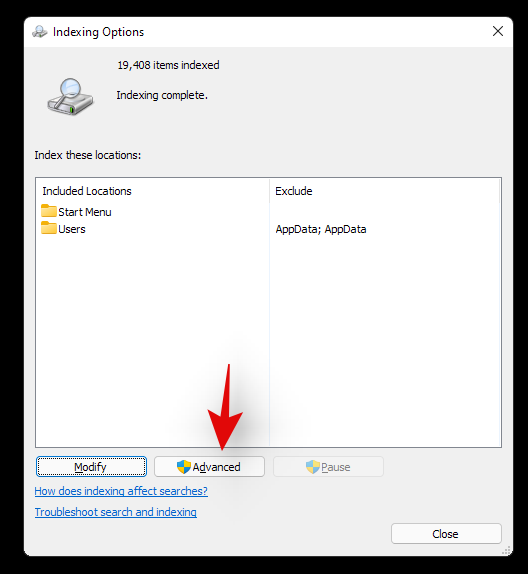
Select ‘Rebuild’ under troubleshooting.
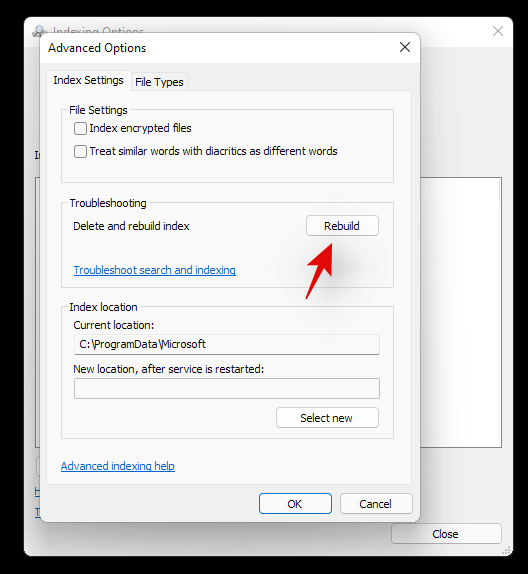
Click on ‘Ok’ once the warning pops up on your screen.
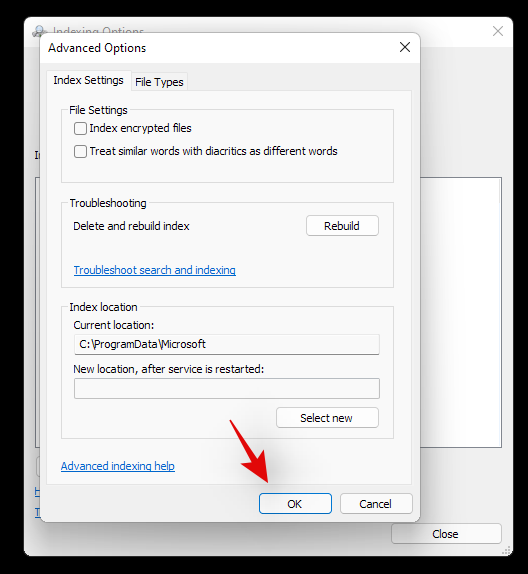
Once the process finishes, we highly recommend you restart your system.
You can now try clicking on the Start icon once your system restarts. Reinstalling the Start menu should help fix any issues with the Start menu on most systems.
Fix #11: Install any pending driver and Windows updates
This might be a bit obvious but you should definitely install any pending driver updates or Windows update on your system. This will help get you up and running on the latest drivers and help your system be compatible with all the hardware installed on your system. While drivers rarely cause issues with Windows features, you can never be too sure. Hence we recommend you install the latest available drivers on your system. You can use the link below to go to our detailed guide for updating drivers on Windows 11. If you are using a pre-built system or a laptop, then we recommend checking your OEM support page for dedicated driver updates as well.
There is a registry value that if modified, can disable your Start menu altogether. If you have been using registry modifiers, cleaners, and more, then it is likely that this registry value was modified which ended up disabling the Start menu on your system. Additionally, the Start menu’s functionality was moved to a Xaml process once Windows 10 was released. This process is known to glitch out
Use the guide below to check if the start menu is disabled on your system and re-enable it if needed.
Press Windows + R on your keyboard and type in the following command given below.
regedit
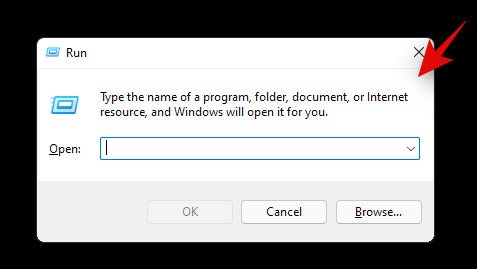
Now press Enter on your keyboard or click on ‘Ok’.
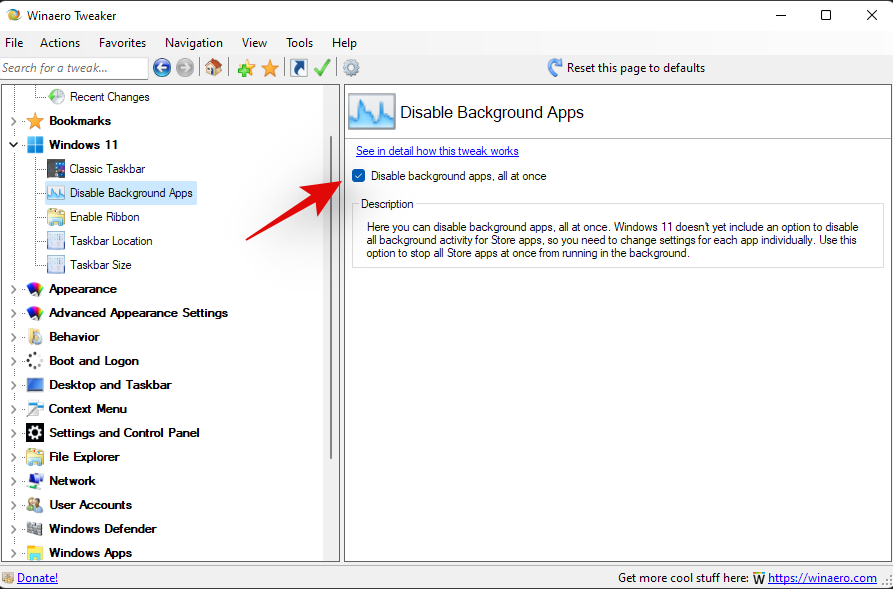
Copy and paste the following address in the address bar at the top of your registry editor.
HKEY_CURRENT_USER\Software\Microsoft\Windows\CurrentVersion\Explorer\Advanced
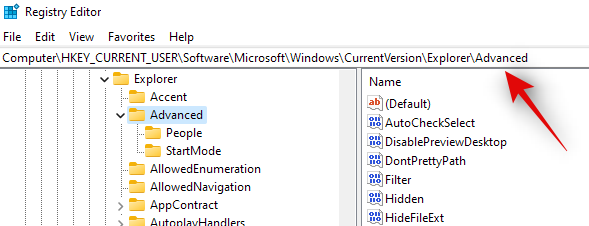
Now right-click on your right tab and select ‘New’.
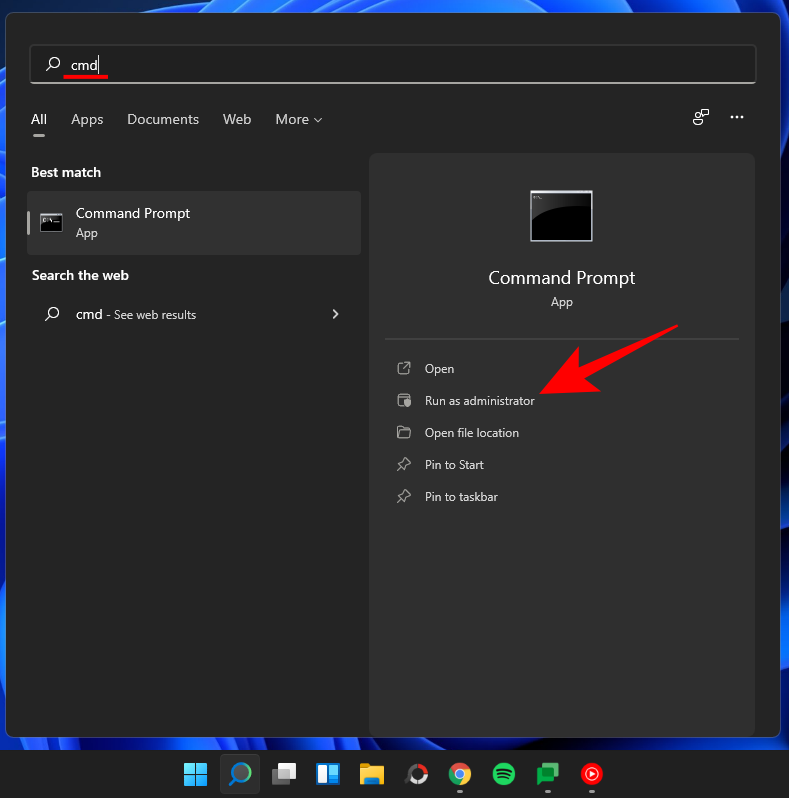
Select ‘DWORD (32-bit value)’.
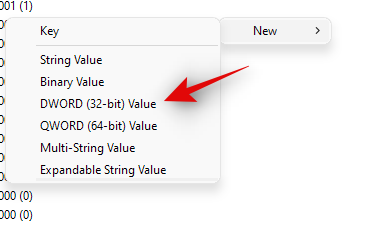
Enter the name as ‘EnableXamlStartMenu’.
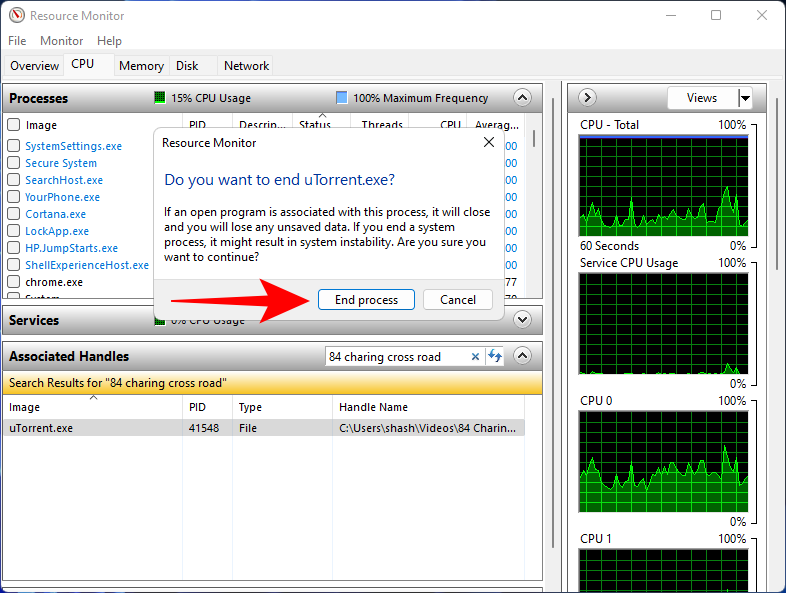
Enter the value as ‘0’.
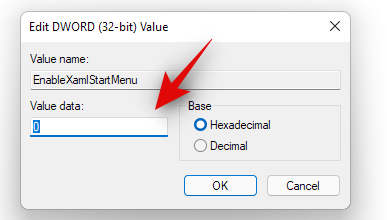
Restart your PC now.
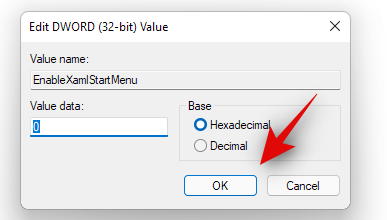
Once restarted try activating the Start menu now. If the Xaml process was facing conflicts, then they should be fixed now and the Start menu should be back up and running on your system again.
Fix #13: Restart Windows background services
If the Start menu still fails to launch then it’s time to restart all background Windows services. Usually restarting the ‘ShellExperienceHost.exe’ is enough but if that does not work for you, you can try restarting all the services listed below. This usually gets the Start menu back up and running on most systems.
Press Ctrl + Shift + Esc on your keyboard to open the ‘Task Manager’. Now click on ‘Details’ at the top to switch to the Details tab.
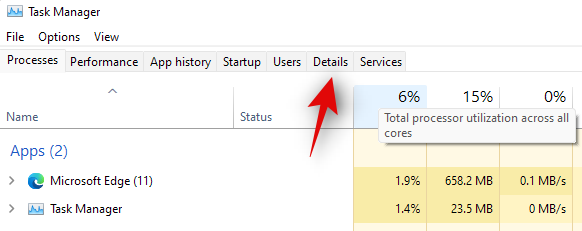
Find ‘StartMenuExperienceHost.exe’ in the list and click and select it.

Press Delete on your keyboard or click on ‘End Task’ in the bottom right corner. Click on ‘End Process’ again to confirm your choice.
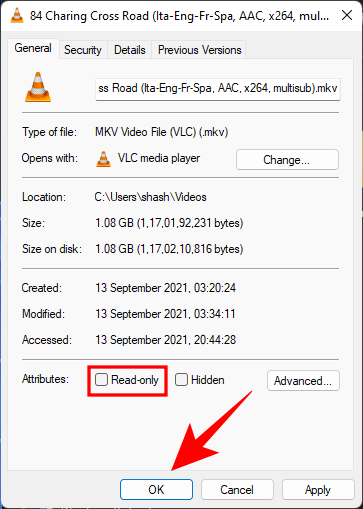
ShellExperienceHost.exe will now be killed. The process should automatically restart within a few seconds. Once restarted, try activating the Start menu on your system. If the menu starts working then you are good to go. However, if it is still not working then use the guide above to restart the following services on your system as well.
And that’s it! If a background process was stopping you from accessing the Start menu then the issue should be fixed for you by now.
Fix #14: Run a Windows Troubleshooter
During a Windows 1909 feature update back in 2019, the Start menu was essentially broken due to a background conflict. To fix this issue for the masses, a troubleshooter was released by Microsoft to help fix this issue. If the Start menu is still not working for you then you can try running this troubleshooter on your system. Use the guide below to download and run the troubleshooter on your system.
Download the archive linked above to a convenient location on your local storage and extract its contents.
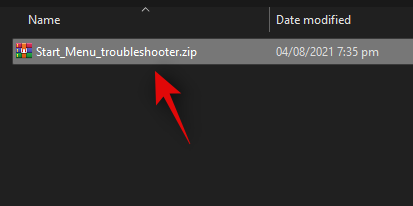
Now copy and paste the ‘startmenu.diagcab’ file on your desktop.
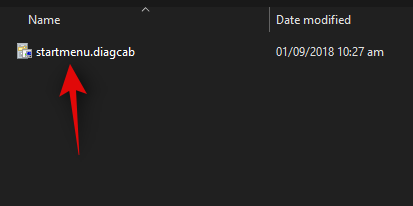
Double click and run the file from your desktop. Click on ‘Advanced’.
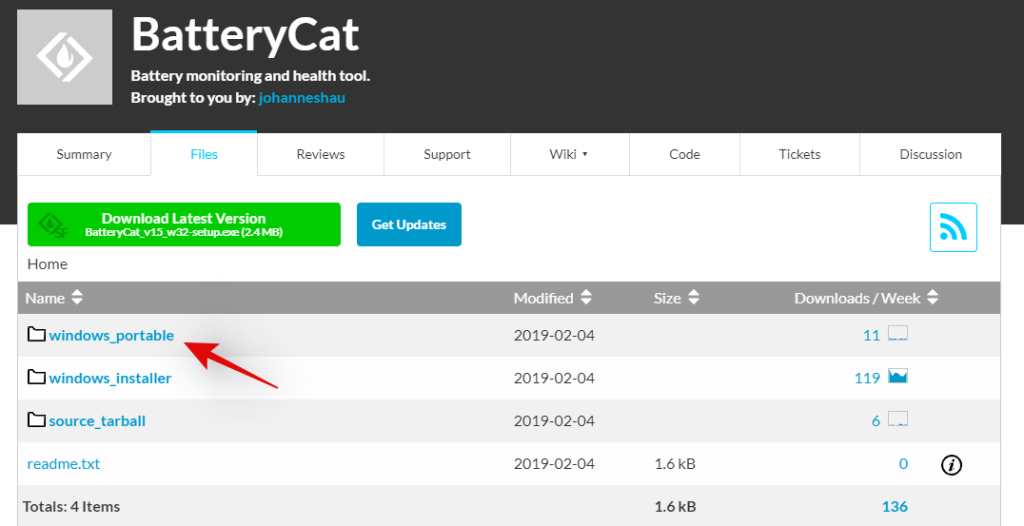
Check the box for ‘Apply repairs automatically’. Click on ‘Next’ once you are done.
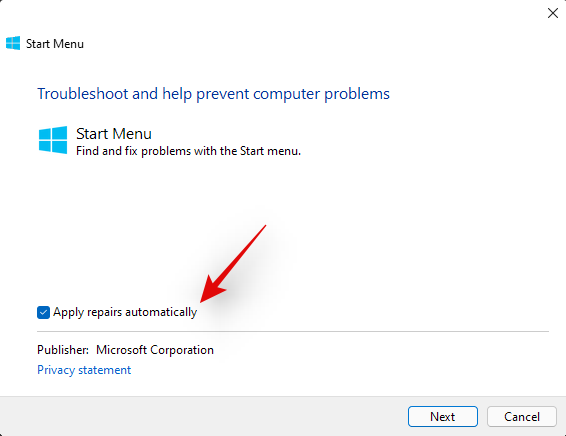
The troubleshooter will now do its thing and try to fix the Start menu on your system. Any errors or issues found will be automatically fixed and the Start menu’s functionality should now be restored on your system.
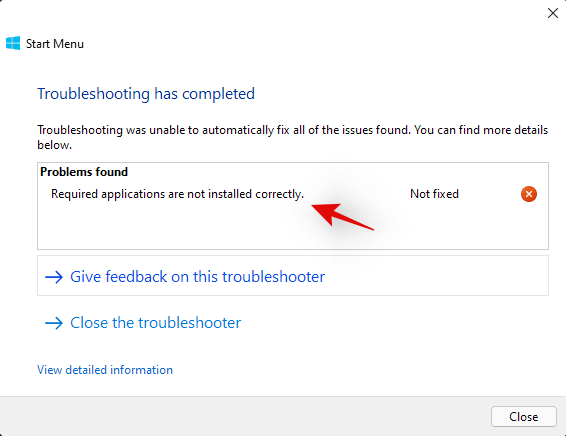
However, if the troubleshooter fails to fix the Start menu then this might indicate a more serious issue on your system. In such cases, let’s verify if Windows is actually able to access and initiate the process for the Start menu on your system. Use the checks below to help you along with the process.
We now need to check if the Start menu is actually available within your install of Windows 11. Let’s create a new local account that will help you verify its functionality. If the Start menu is working in the new account then it is likely an issue with your current user account.
Press Windows + i on your keyboard and click on ‘Accounts’ on your left.
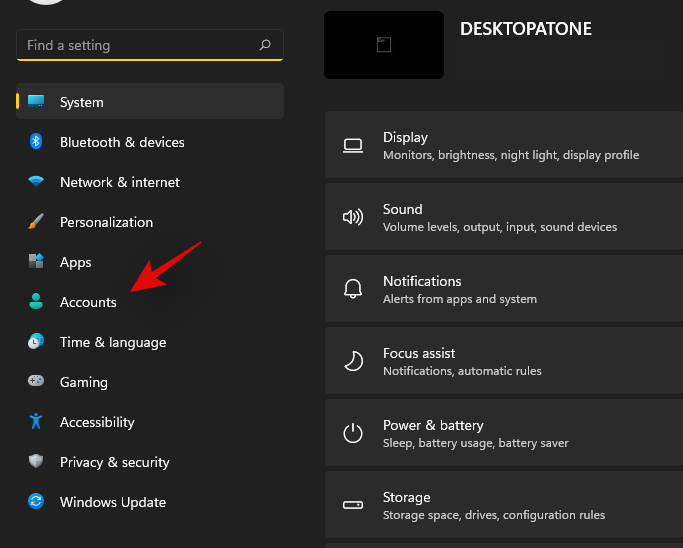
Click on ‘Family & other users’.
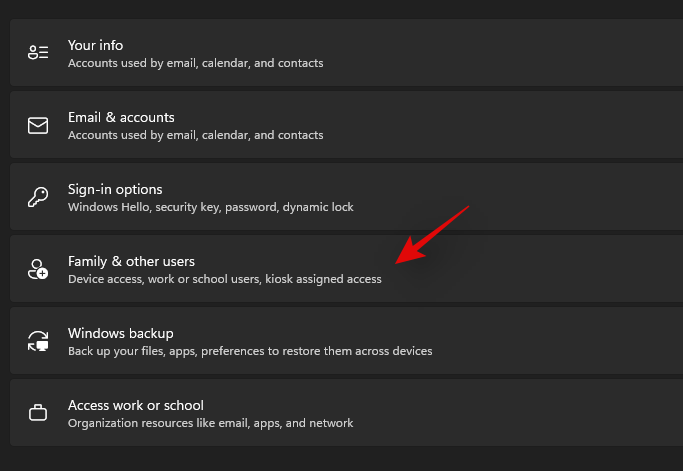
Now click on ‘Add account’ under other users.

Click on ‘I don’t have this person’s sign-in information’.
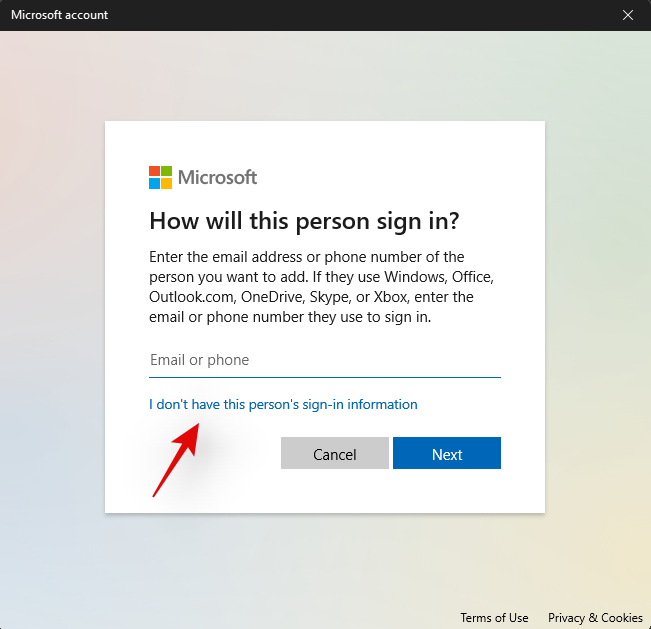
Click on ‘Add a user without a Microsoft Account’.
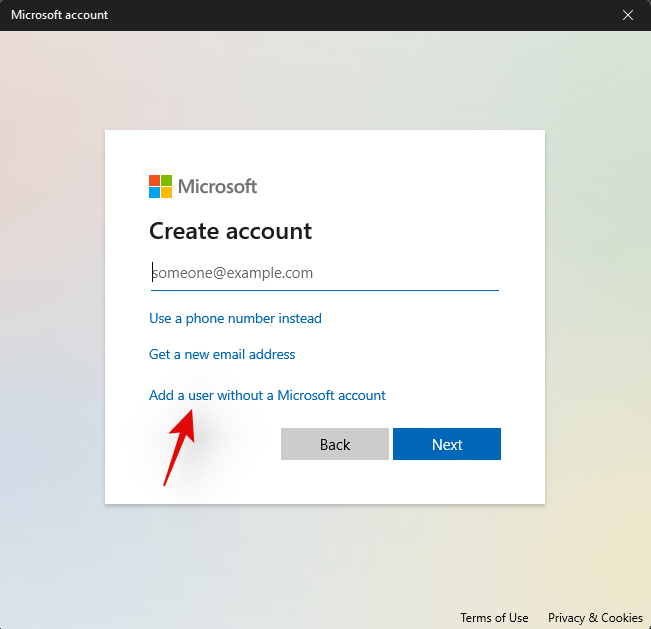
Now enter a username for the new account, and a password if needed.
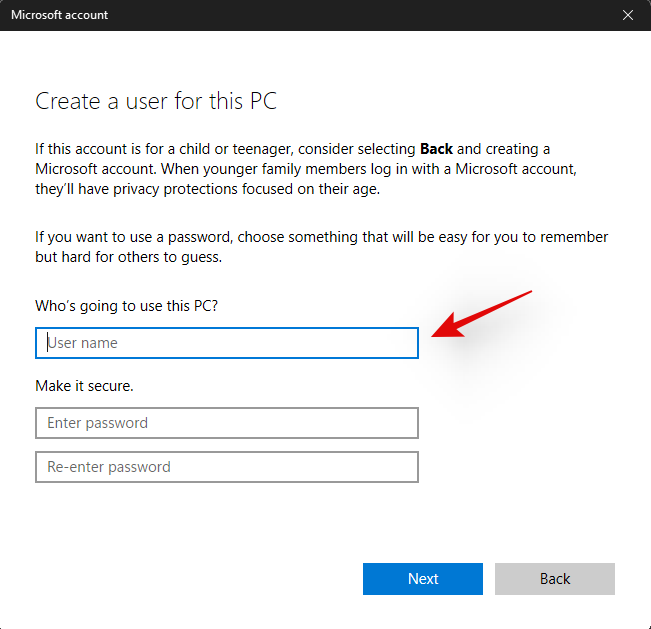
Click on ‘Next’ once you are done.
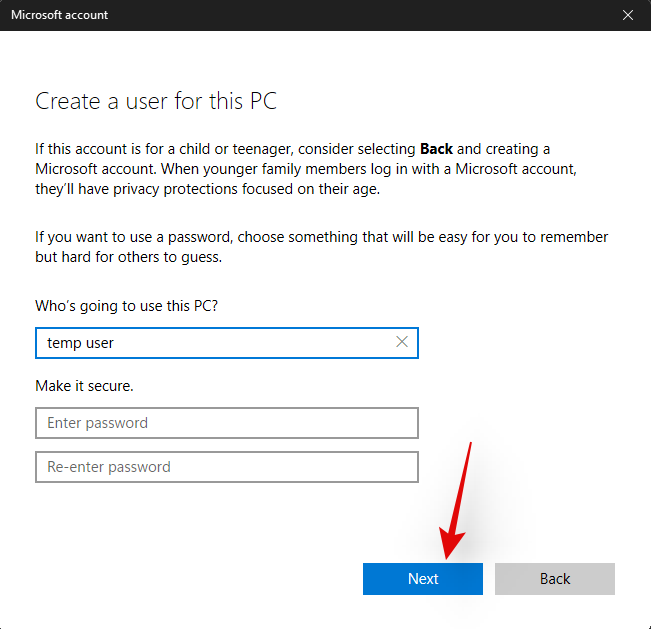
The new user account will now be created. Sign out of your current account and sign in to the new account.
Try to activate the Start menu now in the new temporary local account. If it is working then this is an issue specific to your user account. However, in case the Start menu fails to open, then this might indicate a more serious issue with your Windows 11 installation.
It’s now time to check if the Start menu is working in Safe mode. In case it is, then a third-party app is likely interfering with the Start menu’s functionality. You can remove any third-party apps used to modify the Start menu to try and fix this issue. Follow the guide below to activate Safe mode on Windows 11.
Press Windows + i on your keyboard and select ‘Windows Update’.
Now click on ‘Advanced options’.
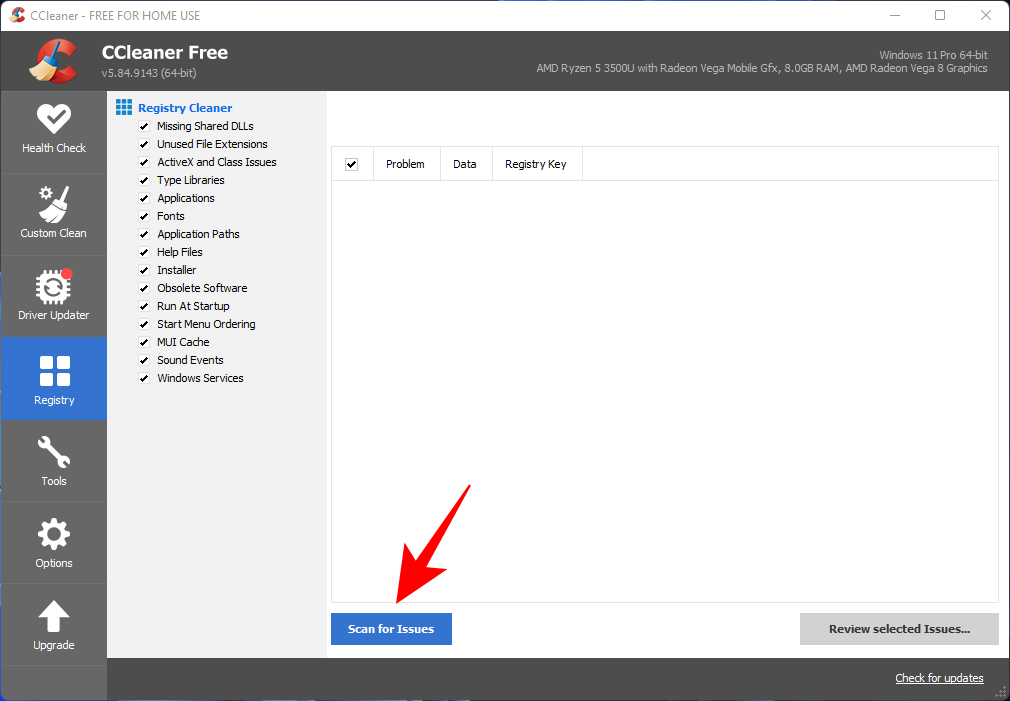
Click and select ‘Recovery’.
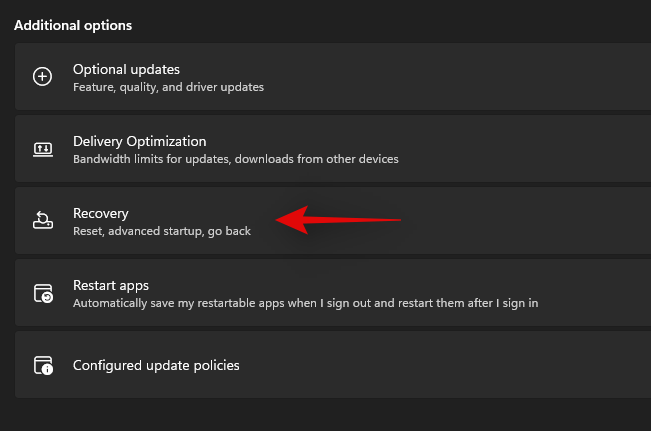
Now click on ‘Restart now’ beside ‘Advanced startup’.

Click on ‘Restart now’ again.
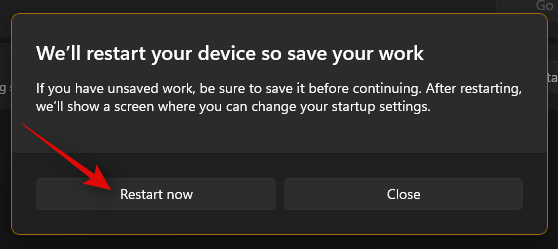
Your PC will now restart to the recovery screen. Click and select ‘Troubleshoot’.
Now click on ‘Advanced options’.
Click on ‘Startup Settings’.
Press ‘F4’ to start your PC in safe mode now.
Once your PC restarts, the safe mode should be active on your system. Now try to activate the start menu. If the menu activates, then it is likely that a third-party app is causing issues on your Windows 11 system. You can try removing apps used to customize the Start menu one by one to find the culprit on your system.
Fix #17: Run a malware and antivirus scan
We recommend you try and run a malware scan before opting for the last resort. If any malware or malicious service is causing issues with the Start menu, then a scan will help solve these issues. Use the guide below to run a malware scan through Windows Defender.
Press Windows + S on your keyboard and search for ‘Windows Security’. Click and launch the app once it shows up in your search results.
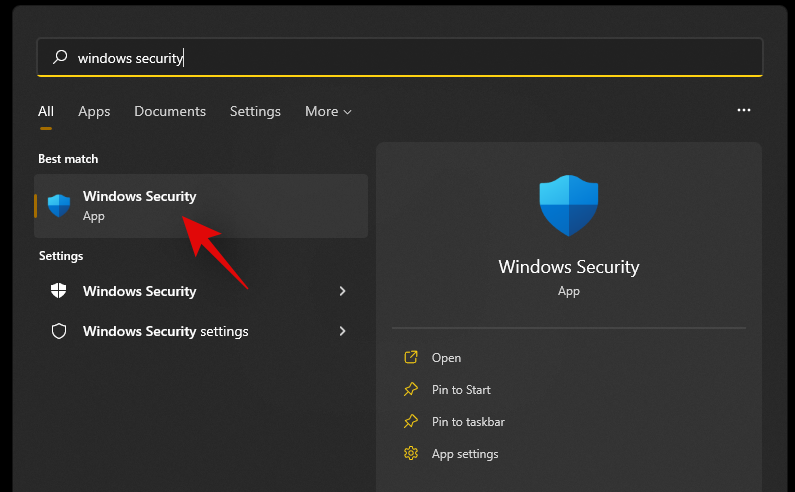
Click on ‘Virus & threat protection’.
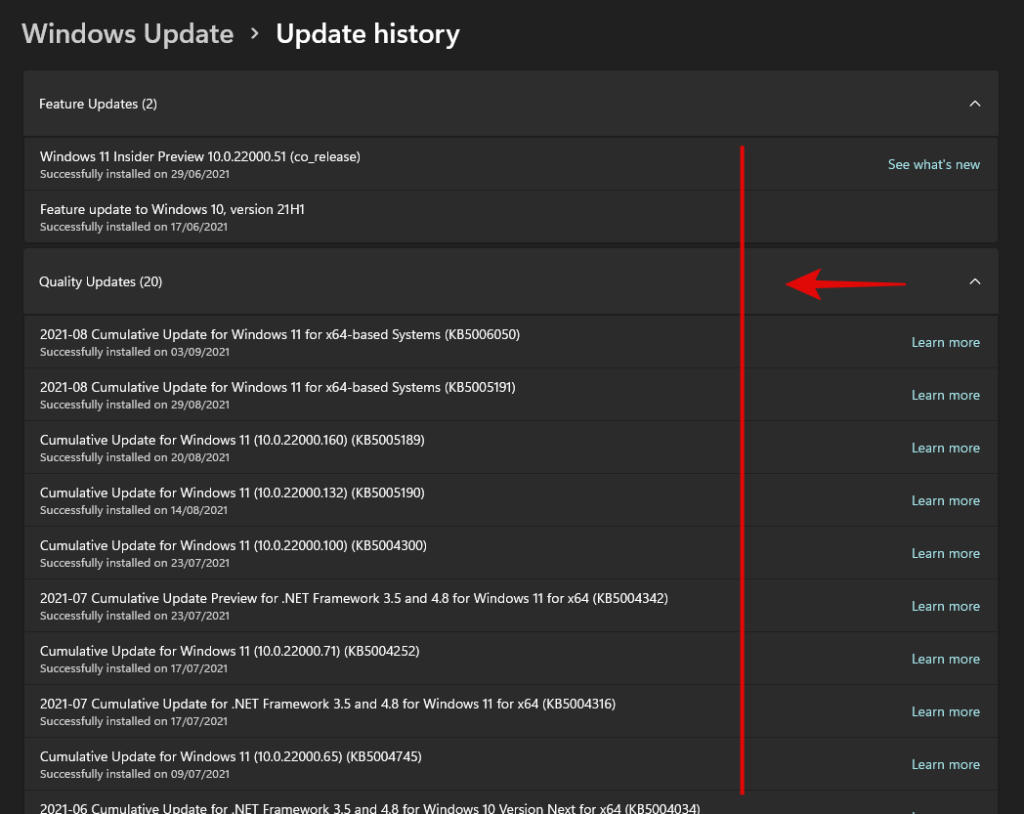
Click on ‘Scan options’.
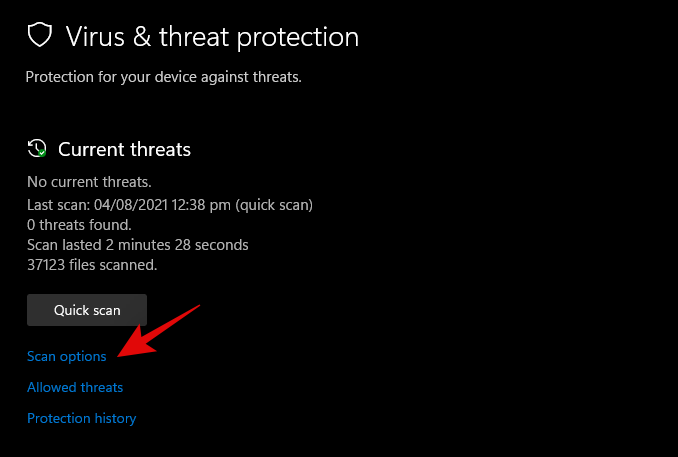
Select ‘Full Scan’.
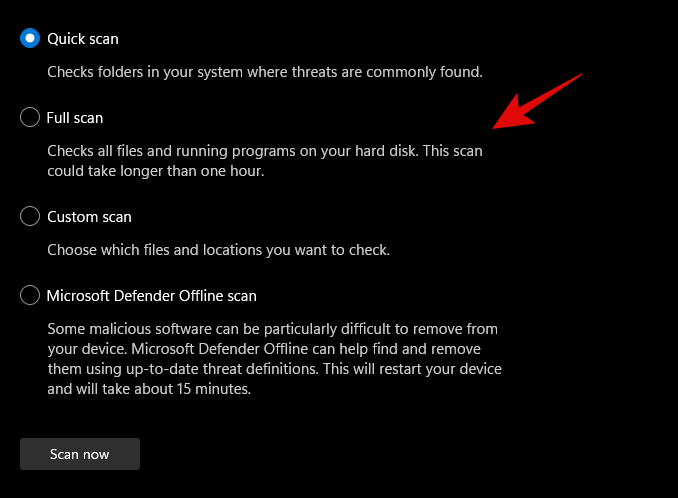
Finally, click on ‘Scan now’.
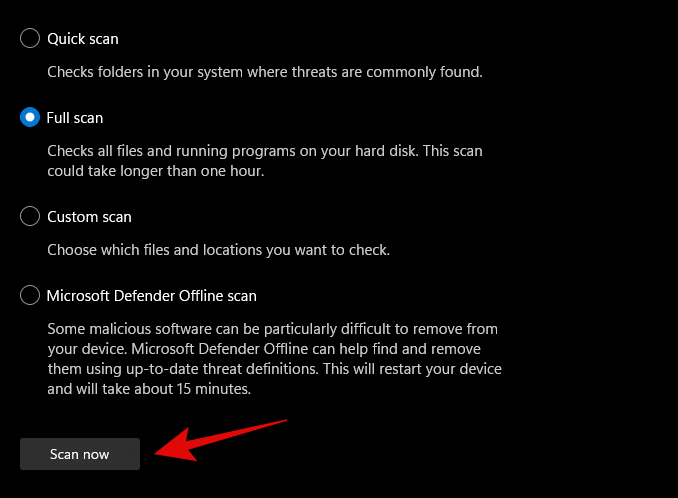
Windows Defender will now scan your entire PC for malware and malicious software. In case any are found, they will be automatically quarantined, and you will be prompted to take the necessary action as soon as possible.
3 General Fixes: Last Resort options
Fix #18: Create a new user via command prompt
If you’re facing an issue where you’re unable to add a local account via Settings to your PC then you can use the command prompt (CMD) for the same. Once added you can try and check if the Start menu is working for you. If it is, you can try the fixes below to restore it in your original account. However, if none of the fixes work for you then you can use the newly created account instead. The new account will be created with administrator privileges so you shouldn’t have problems moving your files and Settings. More on this below.
Press Windows + R to bring up the Run dialog box and type in the following. Press Ctrl + Shift + Enter on your keyboard once you are done.
cmd
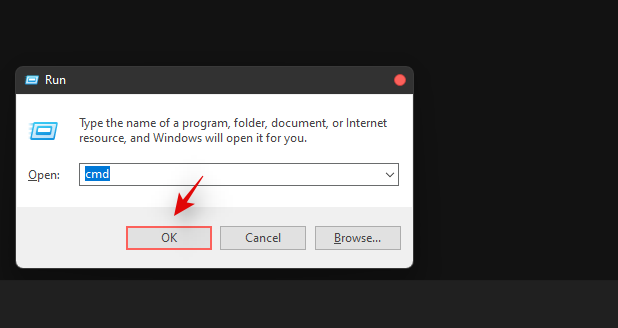
Type in the following command and press Enter on your keyboard. Replace ‘USER’ with your desired username for the new account. Similarly, replace ‘PASSWORD’ with your desired password.
net user /add USER PASSWORD
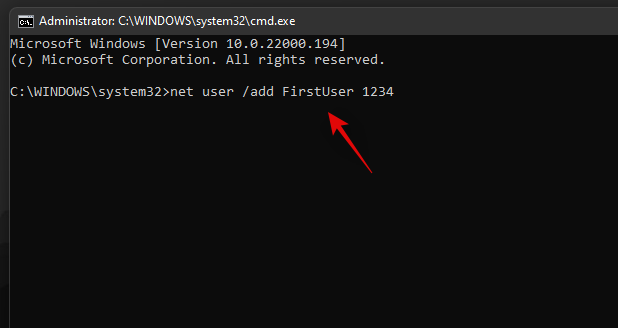
Now execute the following command as well and use the same username as above.
net localgroup administrators USER /add
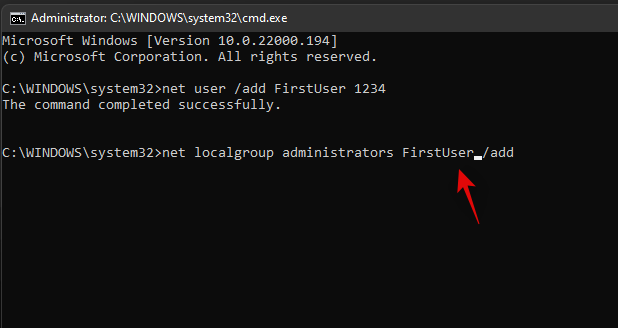
The user will now be added to your PC. Simply restart and log into the new account when the PC restarts.
The start menu should work alright now in the new user account. You can copy your files from the old user account to the new account.
To find your data in the old user account, open Windows Explorer and go to the User folder under the C Drive (or whichever drive you have installed Windows in).
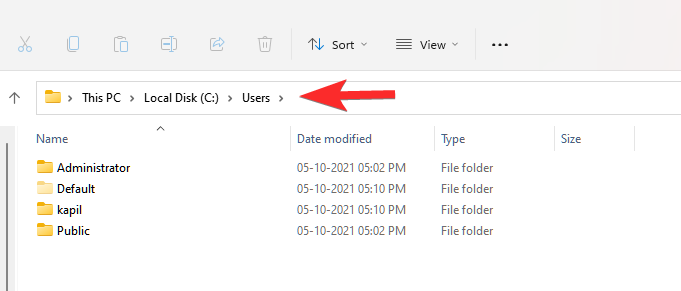
Click on the old user account. Now, copy all the files from here to your new user account that you can also find in the Users folder.
An easy method to transfer files from one user account (old one) to another user account (new one) is to copy the profile. Read more about it here.
Fix #19: Perform a Windows Reset
If you had zero luck with all of the previous methods, we think you should try a Windows Reset. It has been known to solve a host of problems in Windows 11 while keeping your personal files intact. Moreover, resetting Windows to its factory settings can give your PC a fresh start.
Here are the steps.
For this method, you’ll need an elevated PowerShell instance.
Press Win key + r to open the Run box, then type in ‘PowerShell and press Ctrl + Shift + Enter to open PowerShell as administrator.
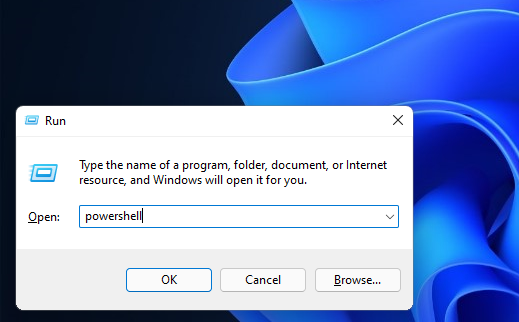
When opened correctly, you should already be inside the C:\Windows\system32 folder.

Now type in ‘system reset and press enter. You should be presented with two options, to either keep all your files or to remove everything. Click on ‘Keep my files’.
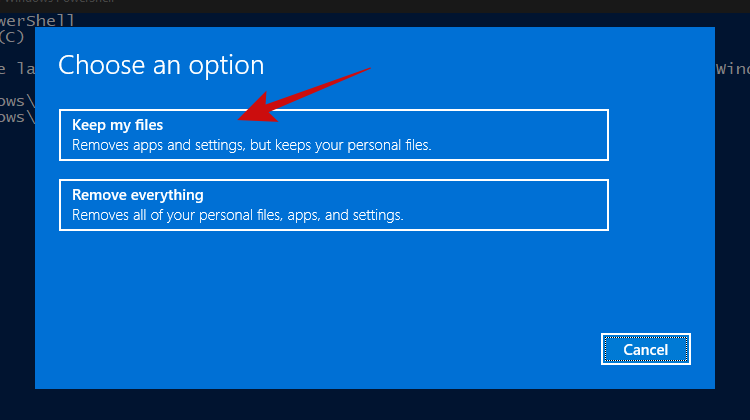
Within a few minutes, Windows should give you a list of apps that’ll be removed from your PC after the reset. Here’s how our list looks.
Once you’ve scrolled through the list of apps, simply click on the ‘Next’ button.
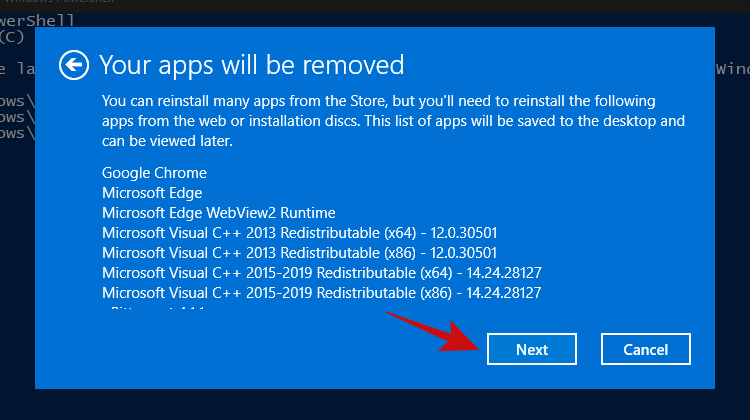
Windows should now start the reset process. Simply follow the instructions and your PC should be reset within a couple of minutes. The Start menu should be working now.
Fix #20: Re-install Windows from scratch
Well, if you’re really considering this method, it’s safe to assume that none of the other methods worked for you. At this point, we think it’s now time to go for a clean installation of Windows 11, which will probably wipe your current Windows partition (if you choose to).
Note: Before proceeding with this method, we recommend making a complete backup of all your files stored inside folders on the Windows drive, such as in Downloads, Documents, and the likes.
Once you have backed up all your files from the Windows drive, let’s take a look at the things you’ll need.
Next, follow our guide on downloading and installing the Windows 11 ISO.
Read: How to Download and Install Official Windows 11 ISO
We hope that after following this guide, you were able to fix the annoying and unresponsive Start menu in Windows 11 and bring it back to life.
If you find yourself stuck at any point in this guide, let us know in the comments below.
Related:
Uzziniet, kā tikt galā ar Melna Mīts: Wukong kļūdām, lai jūs varētu baudīt šo aizraujošo darbības RPG bez pārtraukumiem.
Uzziniet par izplatītām Excel formula kļūdām, piemēram, #VALUE! un #NAME!, kāpēc tās notiek un kā tās novērst.
Ja sistēma Windows Search izmanto īpaši lielus CPU vai diska resursus, varat izmantot tālāk norādītās problēmu novēršanas metodes operētājsistēmā Windows 11. Problēmas novēršanas metodes ietver vienkāršākas metodes...
2021. gada 20. februāris: Google tagad ir bloķējis visus Meet paplašinājumus, kas palīdzēja izveidot režģa skatu, tostarp tālāk minētos. Šie paplašinājumi vairs nedarbojas, un šķiet, ka vienīgā alternatīva ir…
Viens ekrāns, no kura Windows lietotājiem ir kolektīvas bailes, ir Blue Screen of Death. BSOD pastāv jau vairākus gadu desmitus, gadu gaitā mainoties ļoti maz, taču joprojām ir pietiekami spēcīgs, lai...
Microsoft Teams, pateicoties tā dziļajai integrācijai ar Microsoft Office 365, ir kļuvusi par populāru videozvanu risinājumu miljoniem cilvēku visā pasaulē. Neskatoties uz to, ka neesat lietotājam visdraudzīgākais…
Microsoft Teams ir visaptverošs rīks, kas pēdējā laikā ir bijis diezgan populārs, pateicoties tā komandas sadarbības funkcijām. Pakalpojums ļauj izveidot konkrētas komandas savai organizācijai, uzaicināt di…
2021. gada 12. oktobris: liels atjauninājums! Lūdzu, ņemiet vērā, ka jums vairs nav jāaizstāj fails appraiserres.dll, lai apietu TPM pārbaudi un labotu instalēšanas kļūdu, instalējot sistēmu Windows 11.…
Ir pagājuši daži mēneši kopš Windows 11 izlaišanas, un kopš tā laika lietotāji ir migrējuši uz jauno OS. Tā kā arvien vairāk lietotāju izmēģina Windows 11 jaunas problēmas, kļūdas un iestatījumi tiek diskā…
Windows 11 tagad ir izlaista sabiedrībai pēc tam, kad tā tika pretrunīgi vērtēta šī gada jūnijā. Kopš tā laika operētājsistēmā ir notikušas daudzas izmaiņas, starp kurām ir bijušas ļoti apsveicamās, matētas…
Windows uzdevumjosla ir bijusi visas uzmanības centrā, kopš tā ieguva savu jauno izskatu, izlaižot Windows 11. Tagad varat centrēt savu uzdevumjoslu, izbaudīt jauno darbību centru, mainīt to...
Windows 11 būs publiski pieejams pēc dažiem mēnešiem, un visi ir ļoti vēlējušies iegūt jauno OS. Tajā ir jauna sākuma izvēlne, iespēja instalēt Android lietotnes sākotnēji un…
Microsoft Teams ir lieliska saziņas utilīta lietotājiem visās platformās, taču, kad esat pabeidzis to lietot, lietotne sāk kļūt kaitinoša. Ja jūs neizmantojat Te…
Jebkuram tiešsaistē pieejamam pakalpojumam ir savas problēmas, un Microsoft Teams nav izņēmums. Covid-19 pandēmas laikā sadarbības rīka lietotāju skaits ir ievērojami palielinājies…
Kad sistēma Windows 11 tika atklāta pasaulei, Snap Layouts bija pirmā lieta, kas piesaistīja ikviena uzmanību. Tie bija novatoriski, jauni un faktiski noderīgi, strādājot ar Windows sistēmu…
Windows 11 tikko tika izlaists sabiedrībai, un šķiet, ka tas vilina daudz jaunu lietotāju. Daudzi lietotāji ir pārgājuši uz priekšu un jauninājuši uz Windows 11, kamēr citi vēlas izmantot…
Google Meet ir kļuvusi par vienu no visvairāk apspriestajām attālās sadarbības platformām, kas pašlaik ir pieejamas tirgū. Tas piedāvā daudzas pārsteidzošas funkcijas un nodrošina uzticamību…
Tā kā Zoom pārņem lielāko daļu mūsu darba un pat sabiedriskās dzīves, mēs esam sākuši uz to paļauties diezgan lielā mērā. Tālummaiņa ļauj lietotājiem izveidot savas virtuālās sanāksmju telpas un sarunāties…
Windows 11 nesen tika nopludināts sabiedrībai, un visi visā pasaulē steidzas, lai jaunā OS instalēta virtuālajā mašīnā, izmantojot rīkus Liike VirtualBox. Windows 11 nāk...
Tie, kuri pietiekami vēlas apgūt Windows 11 izstrādātāju versiju, izmantojot programmu Insider, ir pamazām sākuši saprast, kāpēc vairums lietotāju mēdz gaidīt, līdz tiks izlaista stabilā versija. Būt pirmajam…
Ir daudz iemeslu, kāpēc klēpjdators nevar izveidot savienojumu ar Wi-Fi, un tāpēc ir daudz veidu, kā novērst kļūdu. Ja klēpjdators nevar izveidot savienojumu ar Wi-Fi, varat izmēģināt šādus veidus, kā novērst šo problēmu.
Pēc USB sāknēšanas izveides Windows instalēšanai lietotājiem jāpārbauda USB sāknēšanas veiktspēja, lai redzētu, vai tā ir veiksmīgi izveidota.
Vairāki bezmaksas rīki var paredzēt diska kļūmes, pirms tās notiek, dodot laiku datu dublēšanai un diska savlaicīgai nomaiņai.
Izmantojot pareizos rīkus, varat skenēt sistēmu un noņemt spiegprogrammatūru, reklāmprogrammatūru un citas ļaunprātīgas programmas, kas varētu slēpties jūsu sistēmā.
Piemēram, ja dators, mobilā ierīce vai printeris mēģina izveidot savienojumu ar Microsoft Windows datoru tīklā, var parādīties kļūdas ziņojums “Tīkla ceļš nav atrasts — kļūda 0x80070035”.
Zilais nāves ekrāns (BSOD) ir izplatīta un ne jauna Windows kļūda, kad datorā rodas nopietna sistēmas kļūda.
Tā vietā, lai veiktu manuālas un tiešas piekļuves darbības operētājsistēmā Windows, mēs varam tās aizstāt ar pieejamajām CMD komandām, lai nodrošinātu ātrāku piekļuvi.
Pēc neskaitāmām stundām, kas pavadītas, lietojot koledžas klēpjdatoru un galddatora skaļruņu sistēmu, daudzi cilvēki atklāj, ka daži gudri uzlabojumi var pārvērst viņu šauro kopmītņu telpu par galveno straumēšanas centru, neiztērējot pārāk daudz naudas.
No Windows 11 pārlūkprogramma Internet Explorer tiks noņemta. Šajā rakstā WebTech360 sniegs norādījumus, kā lietot pārlūkprogrammu Internet Explorer operētājsistēmā Windows 11.
Klēpjdatora skārienpaliktnis nav paredzēts tikai norādīšanai, klikšķināšanai un tālummaiņai. Taisnstūrveida virsma atbalsta arī žestus, kas ļauj pārslēgties starp lietotnēm, kontrolēt multivides atskaņošanu, pārvaldīt failus un pat skatīt paziņojumus.
